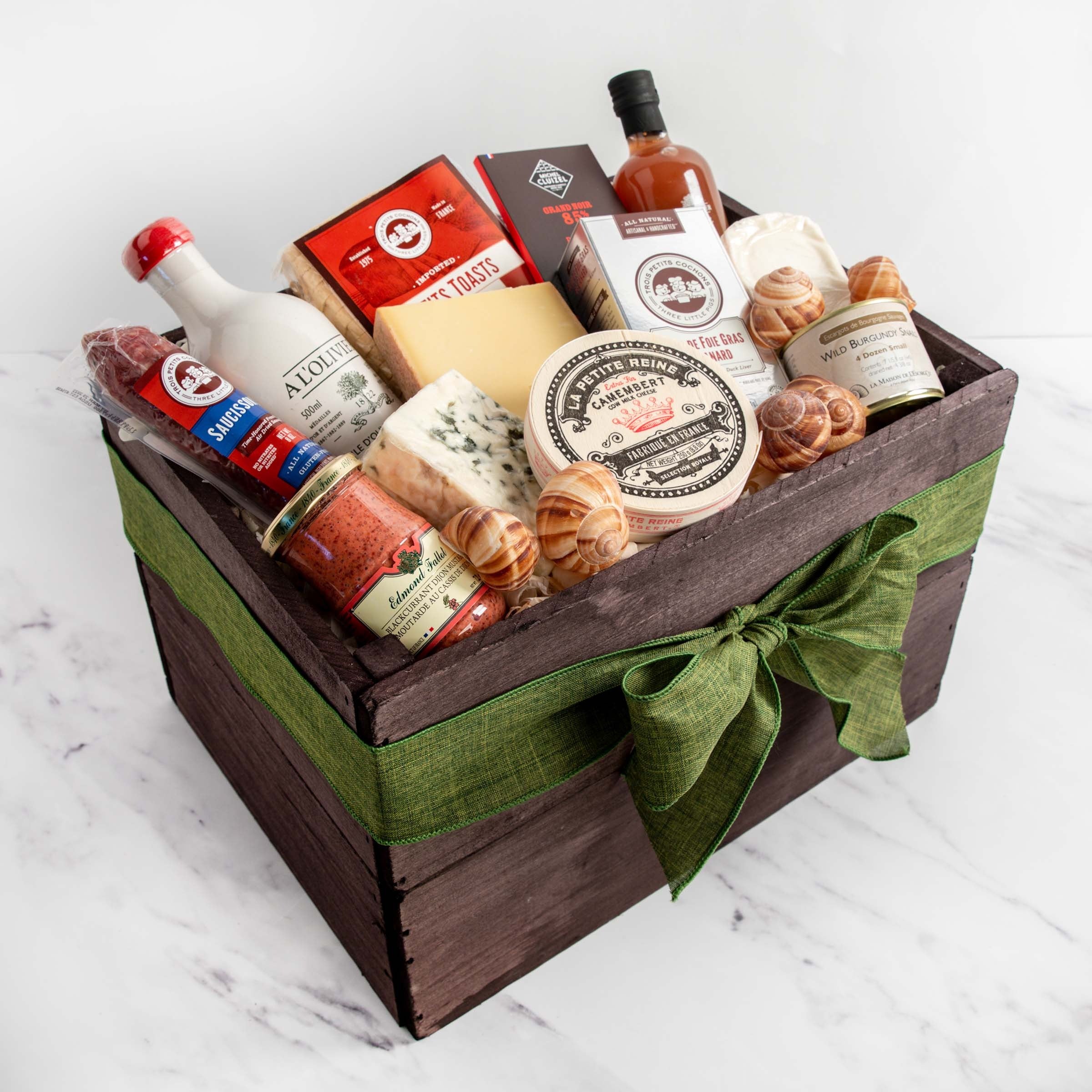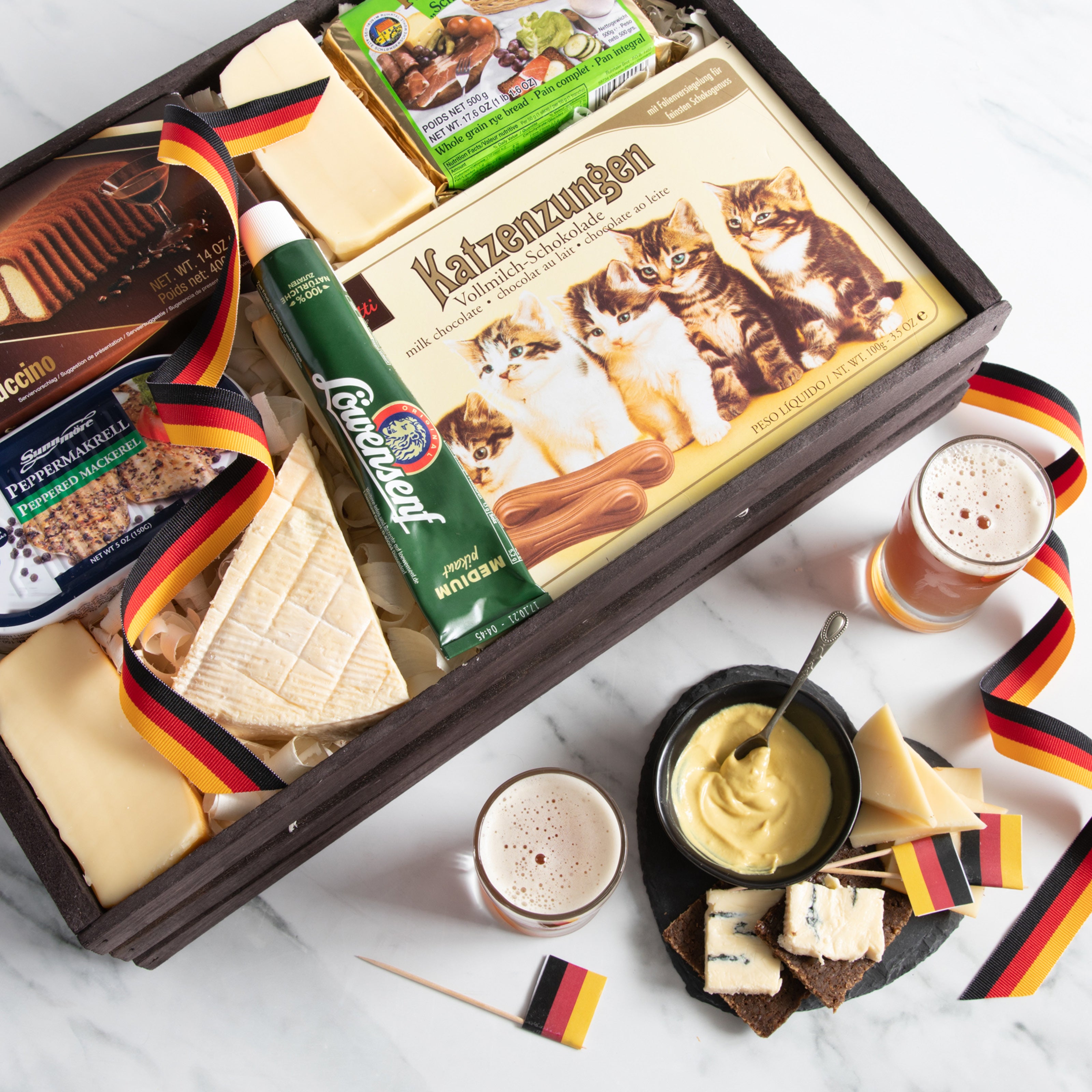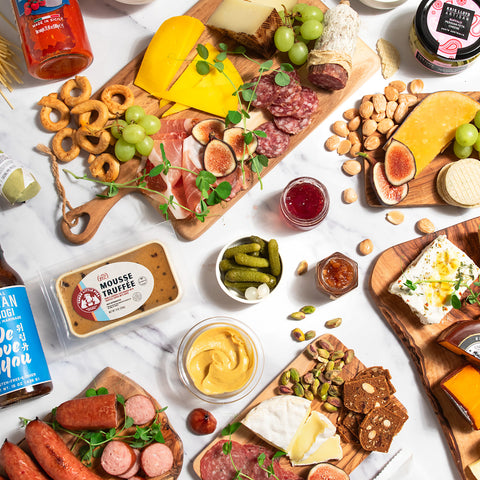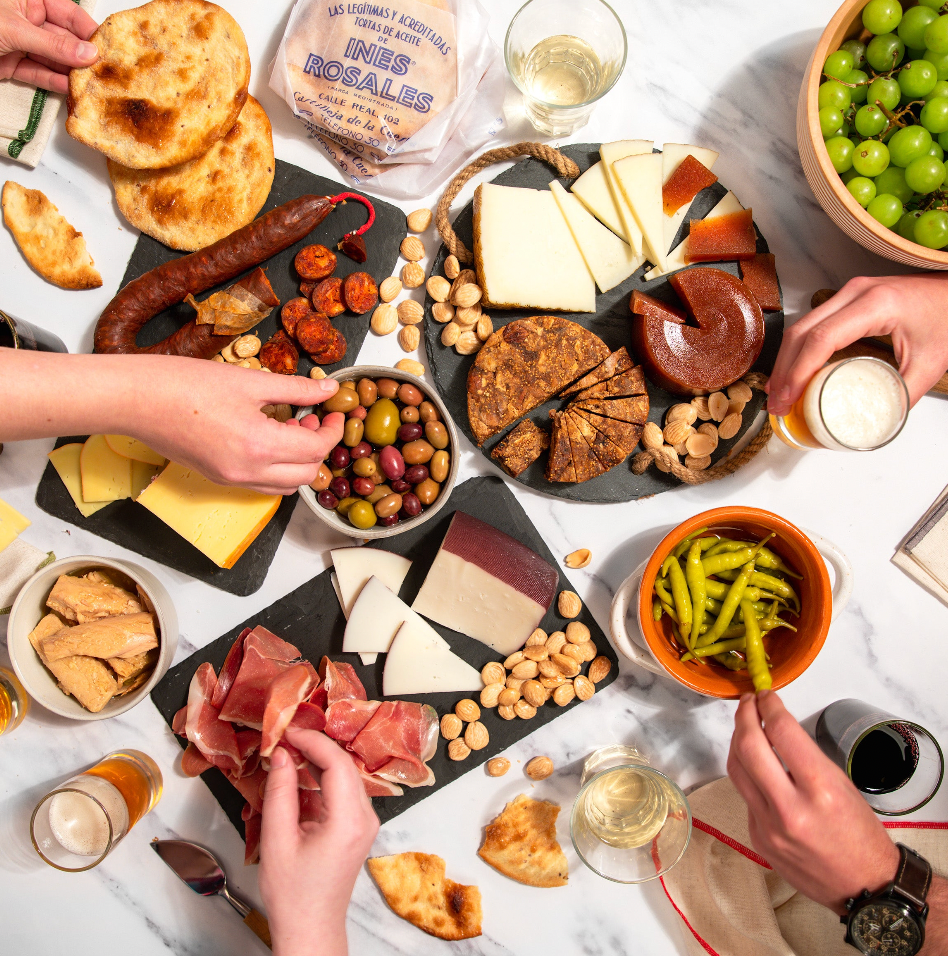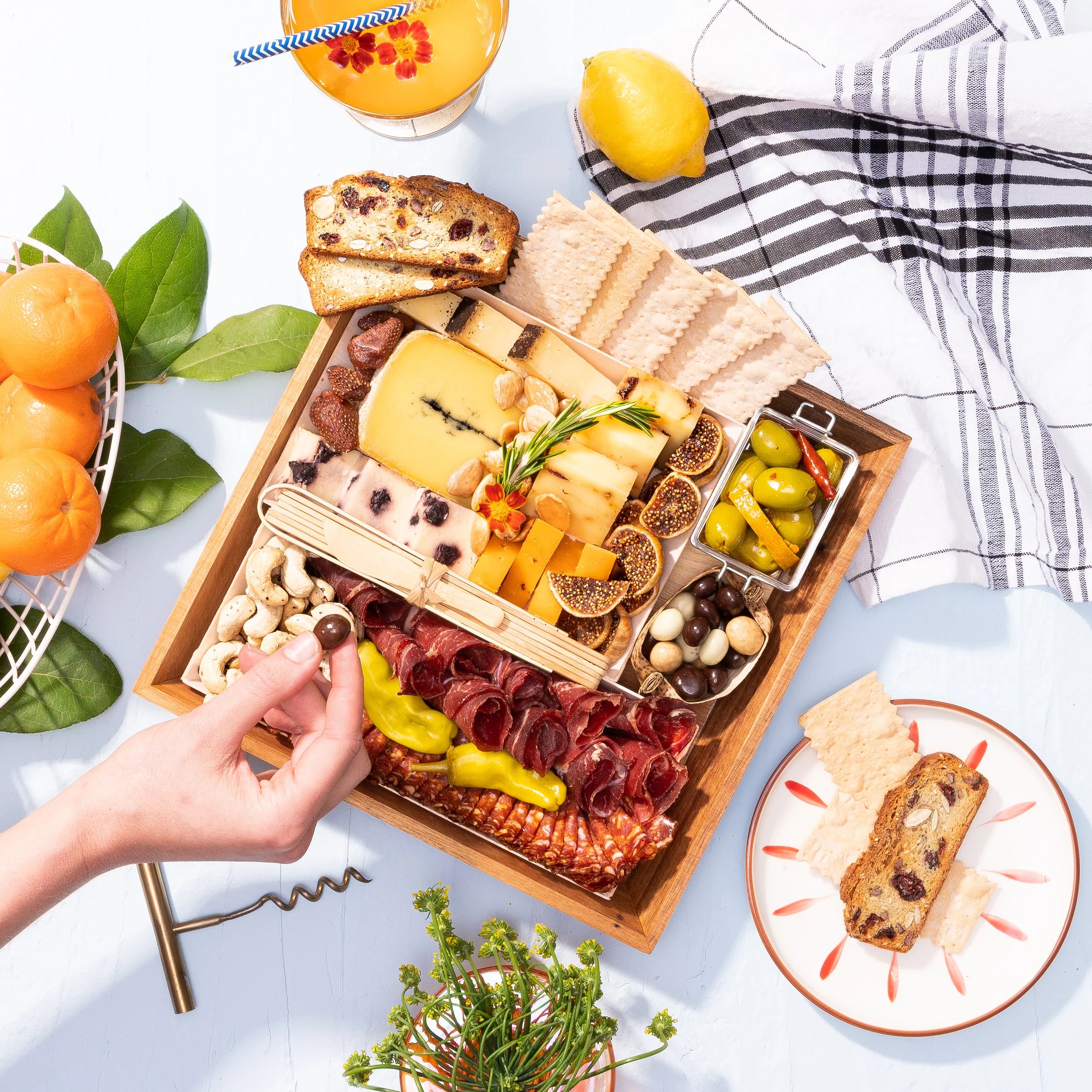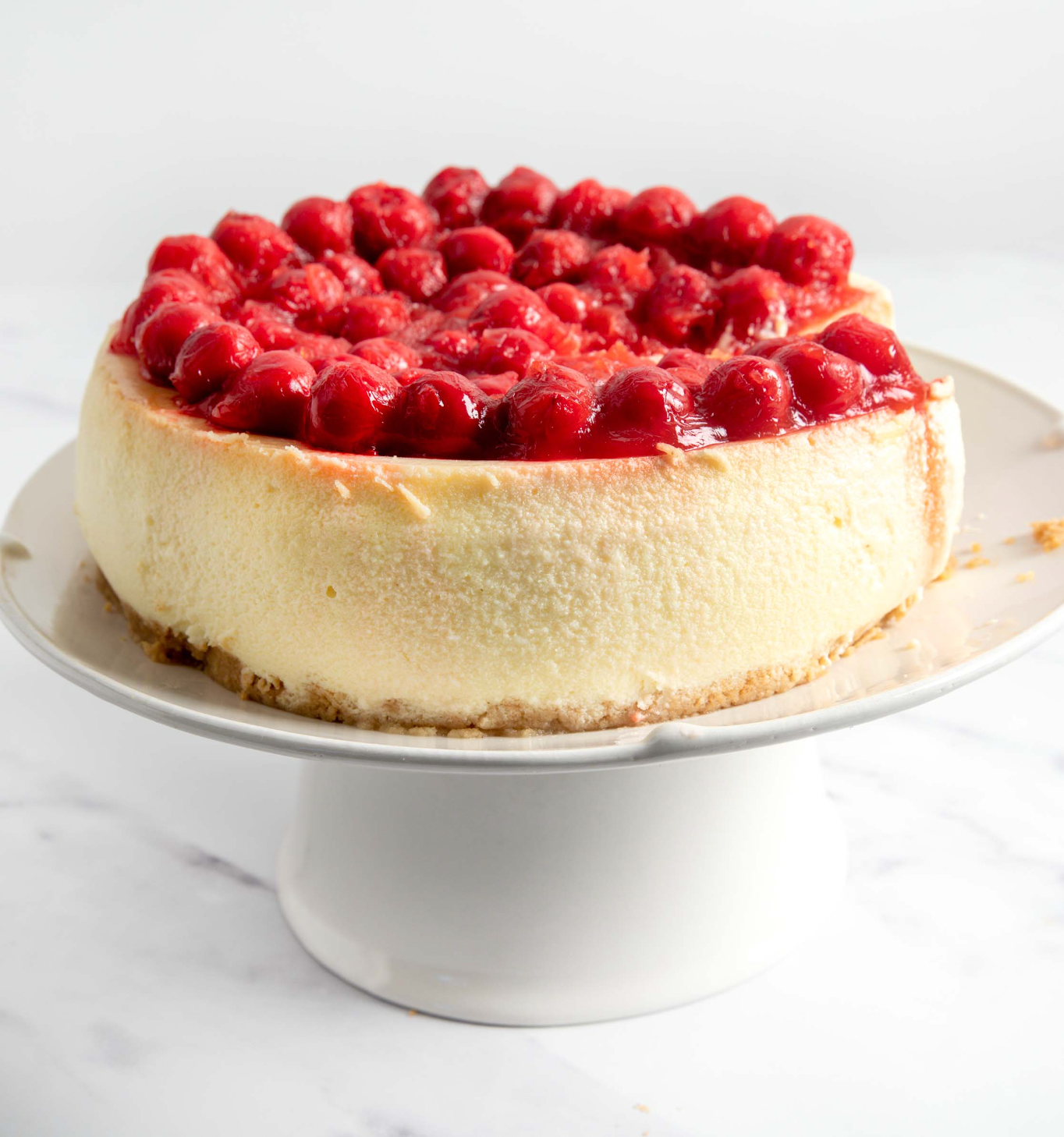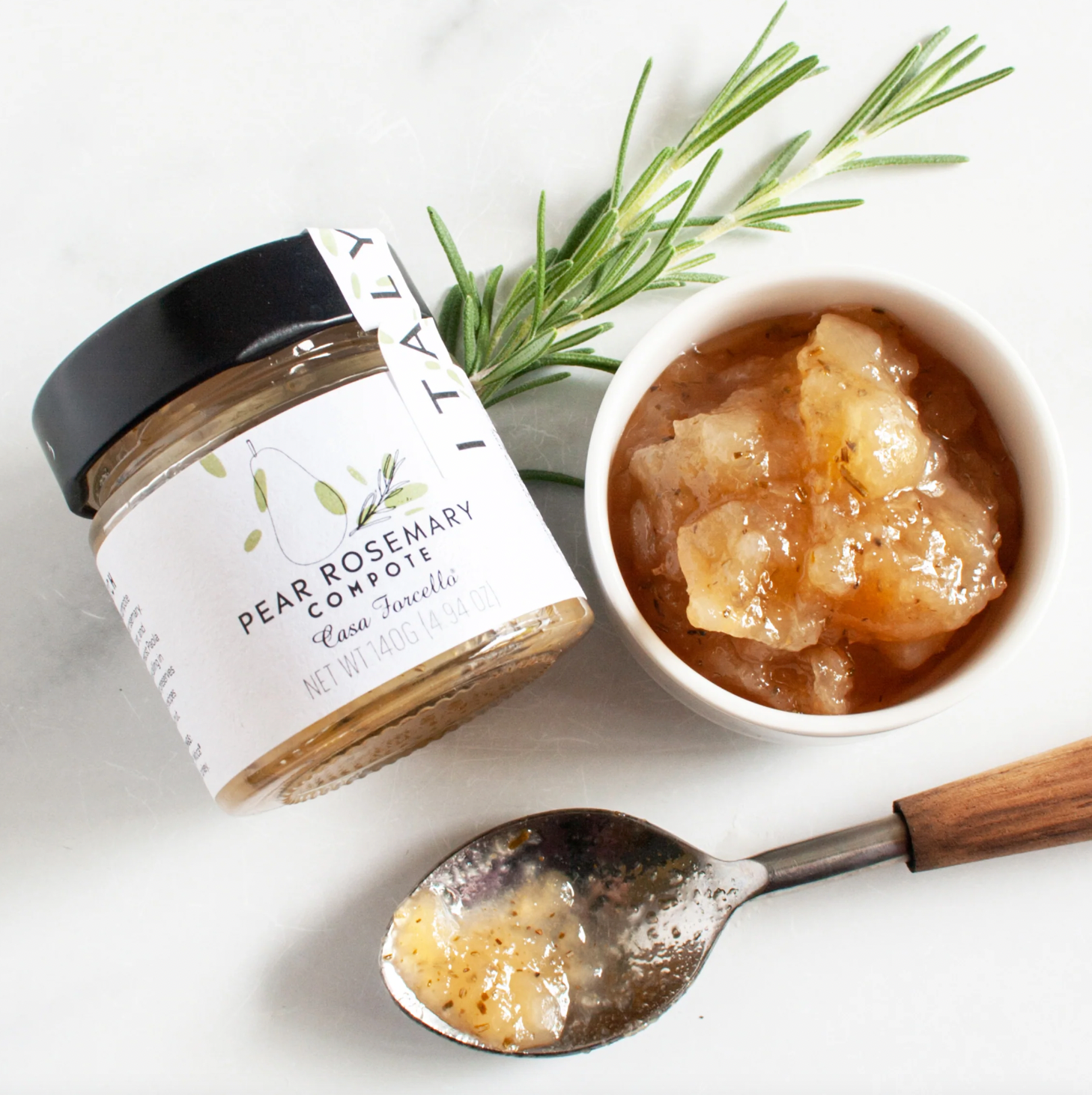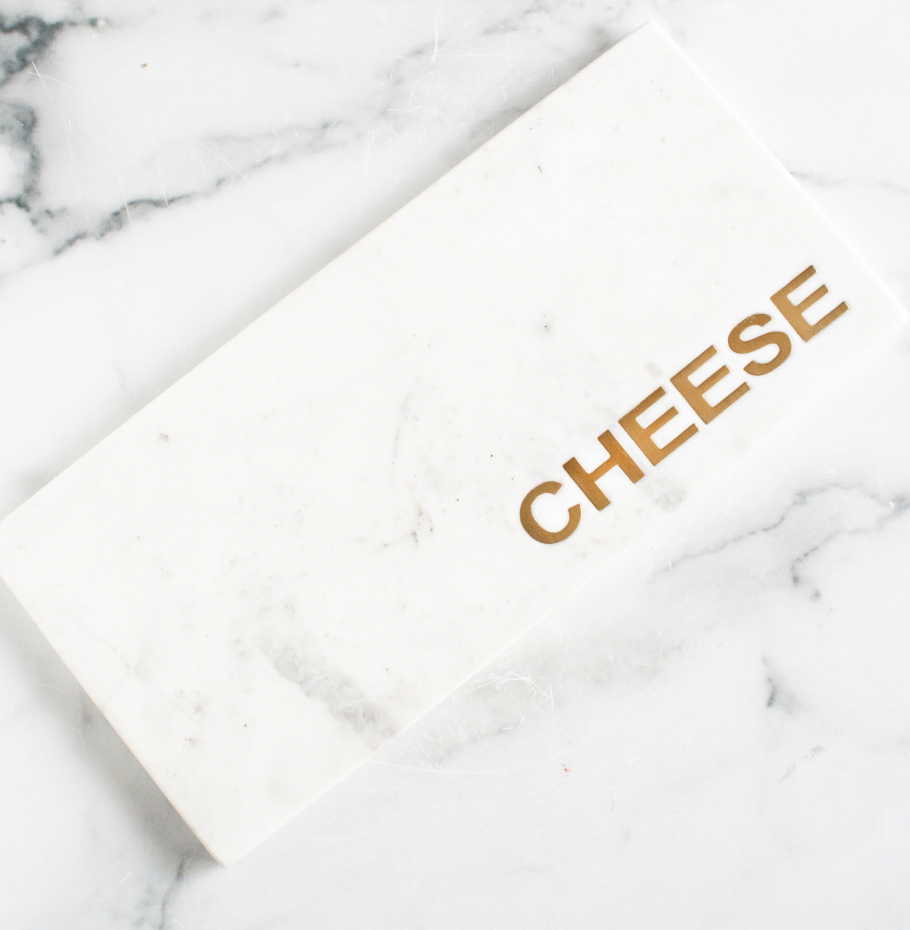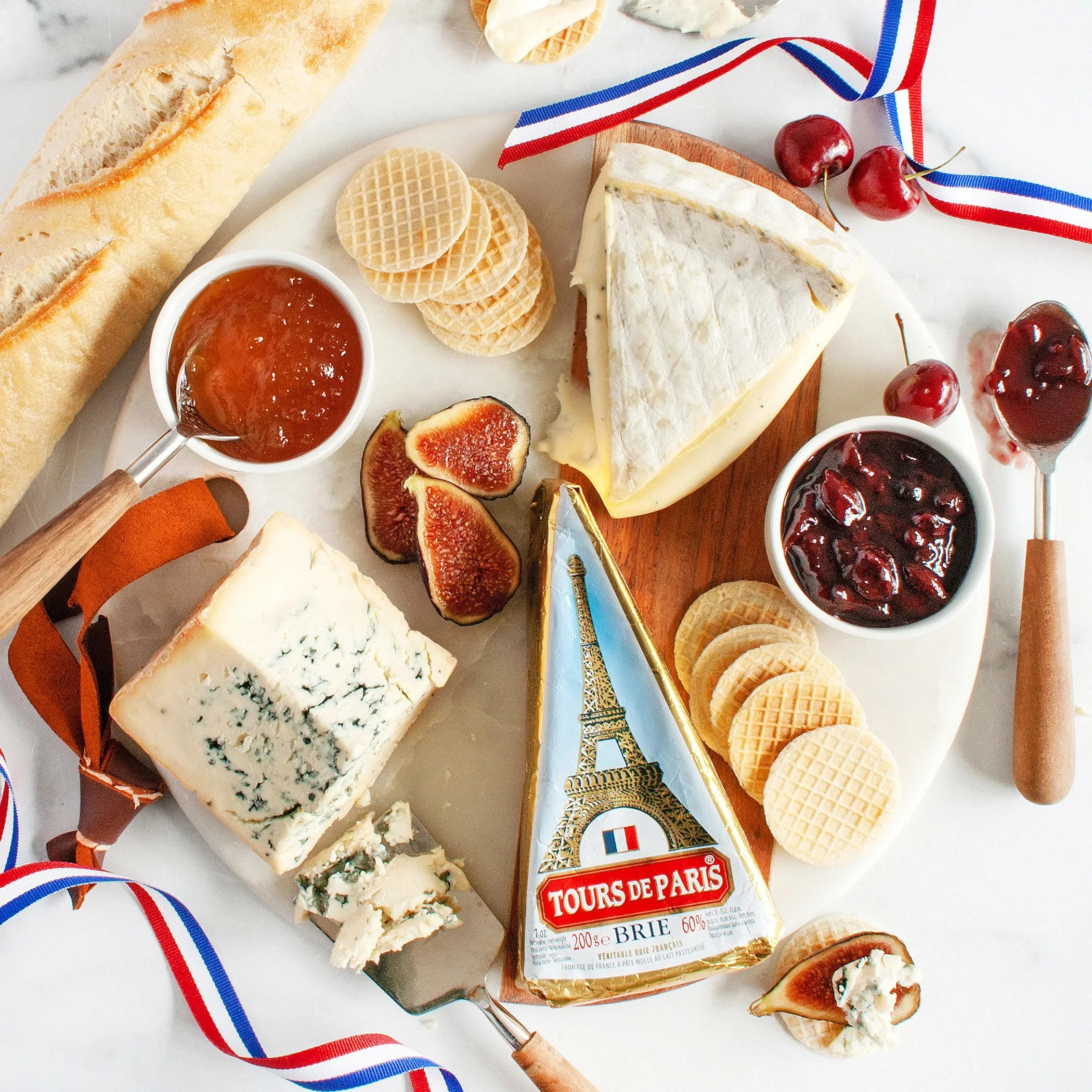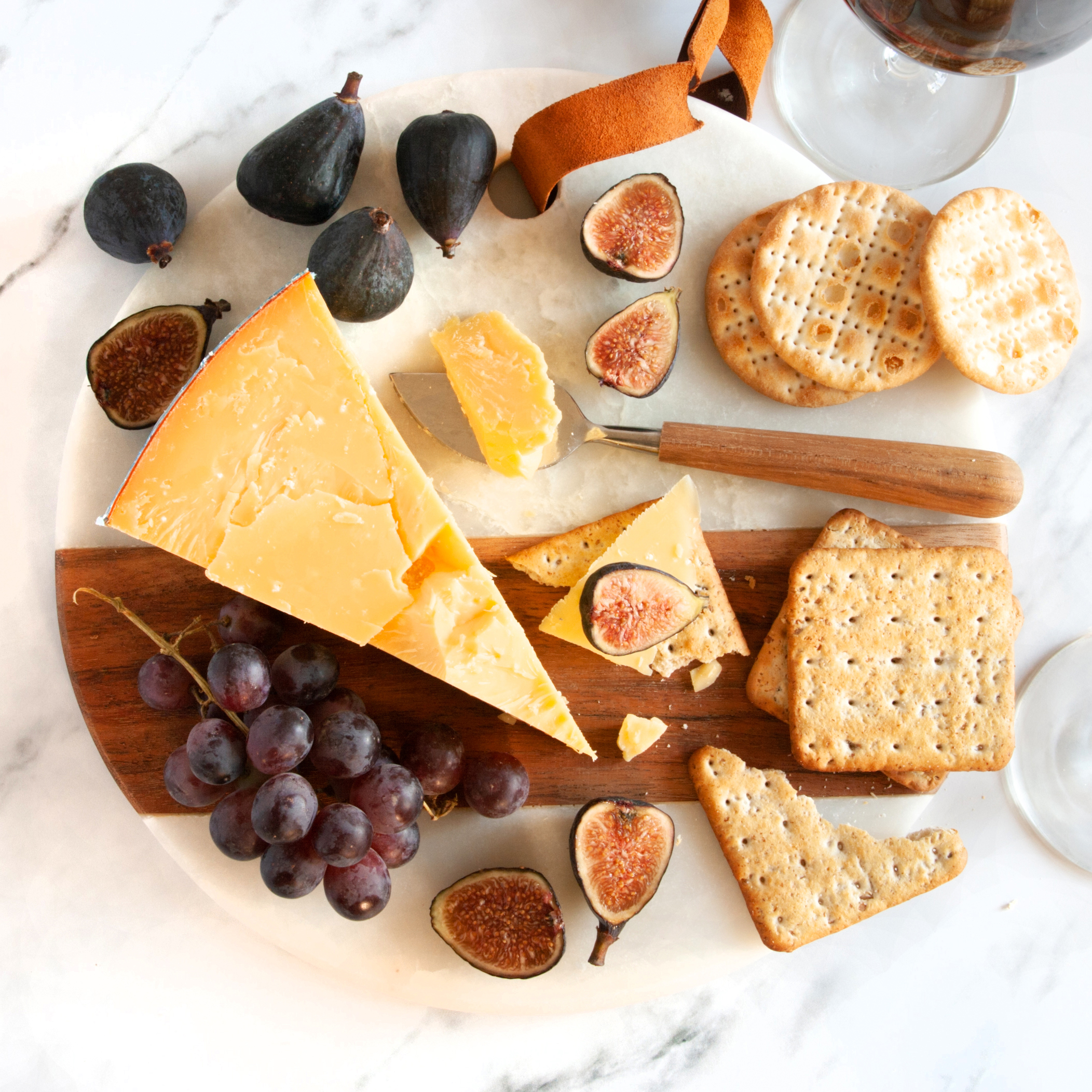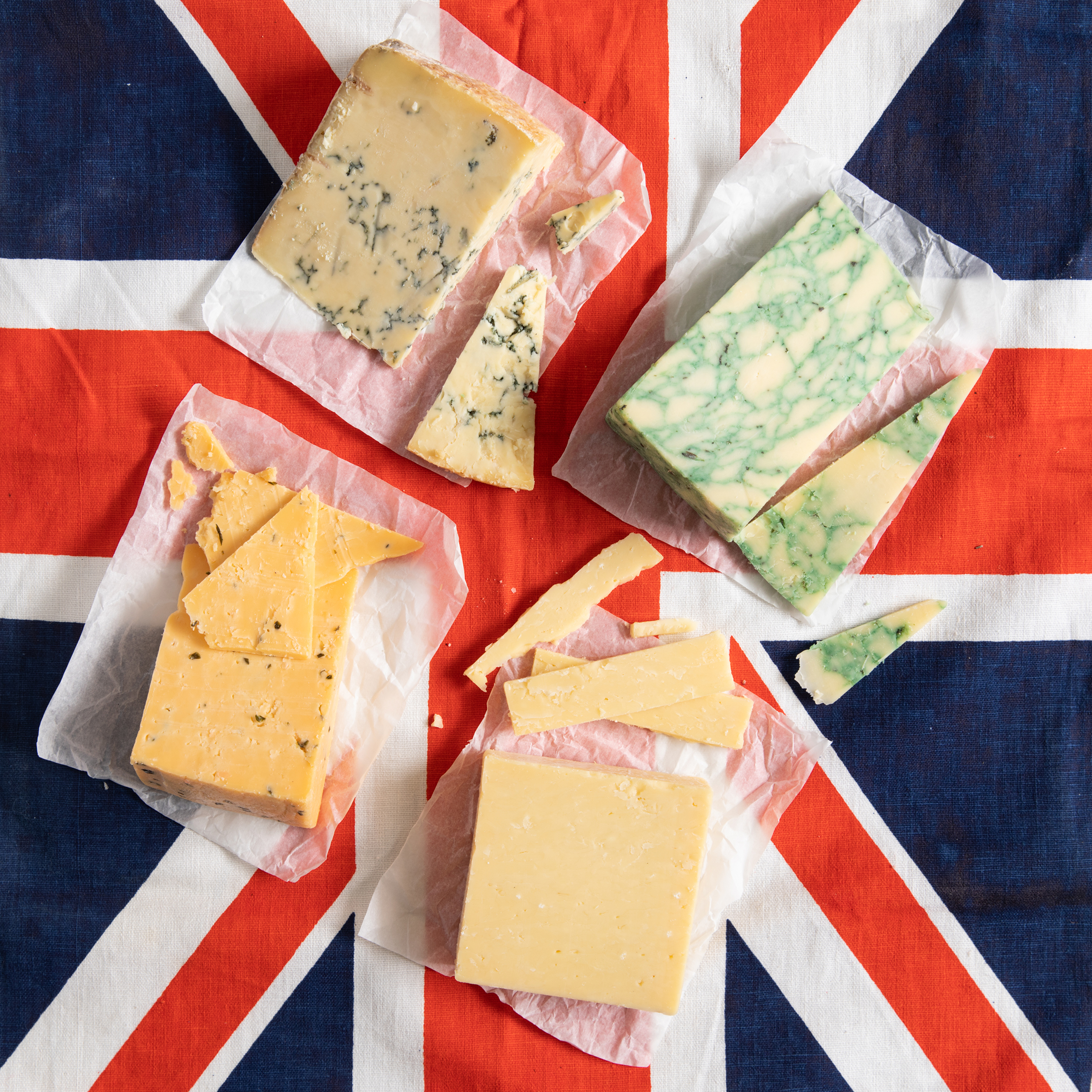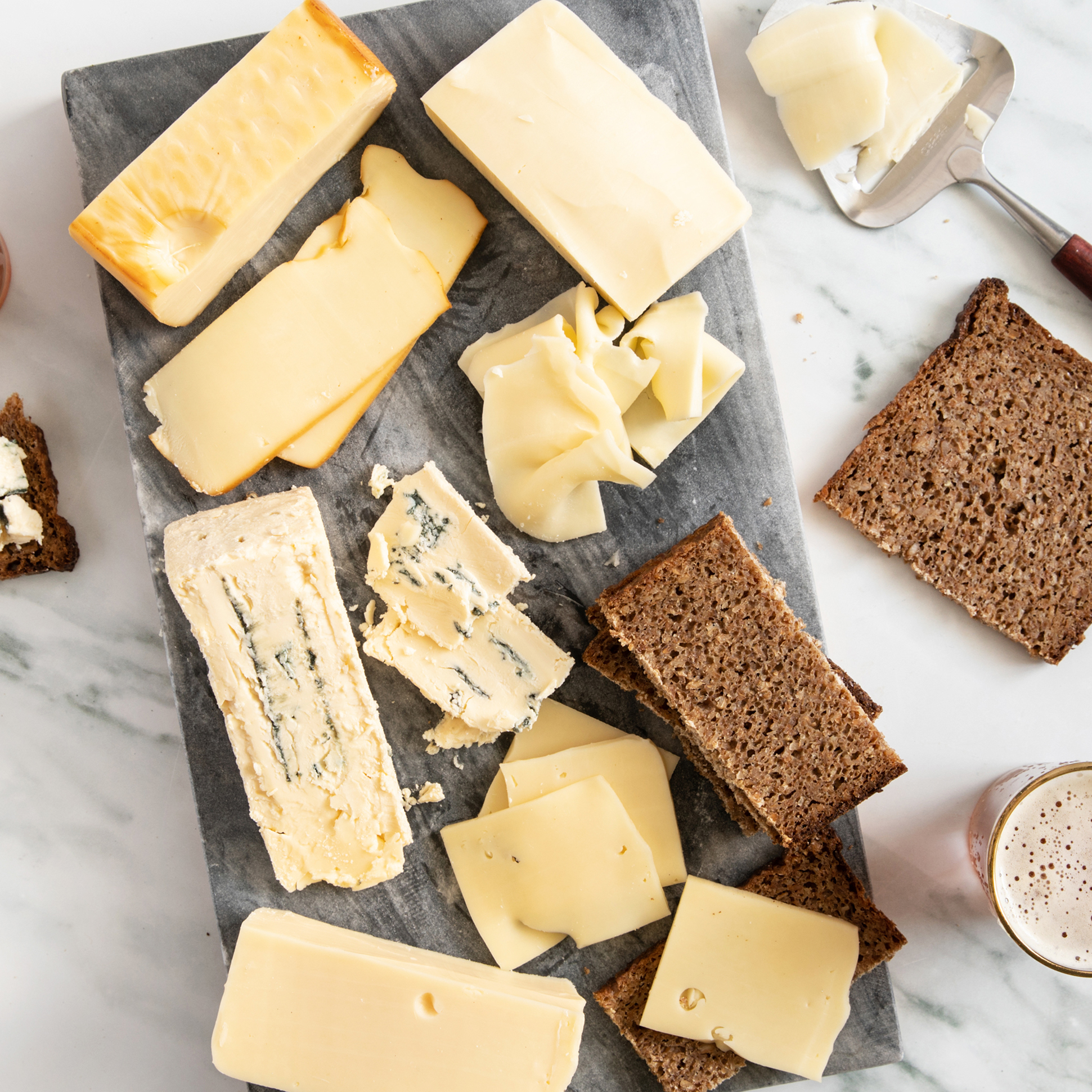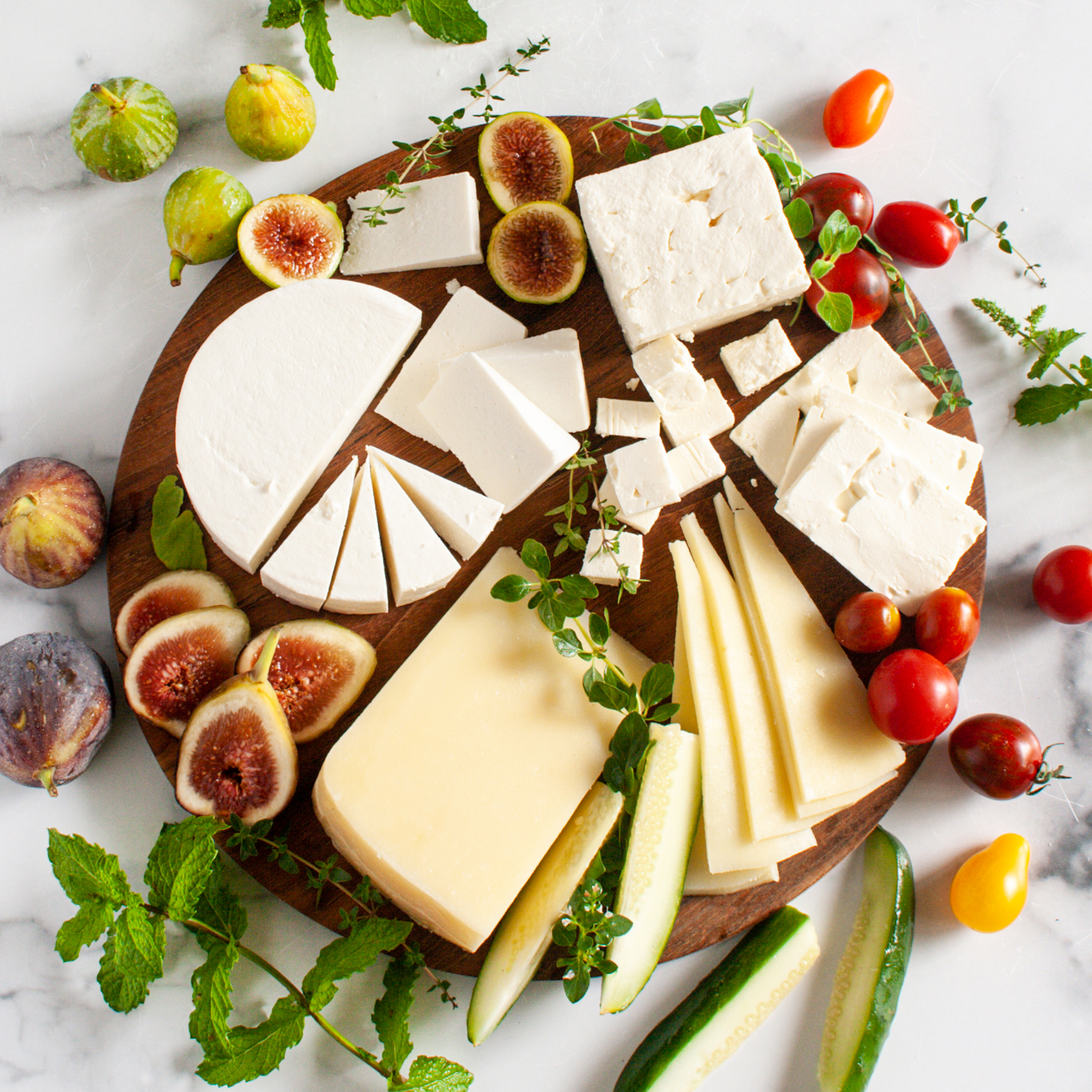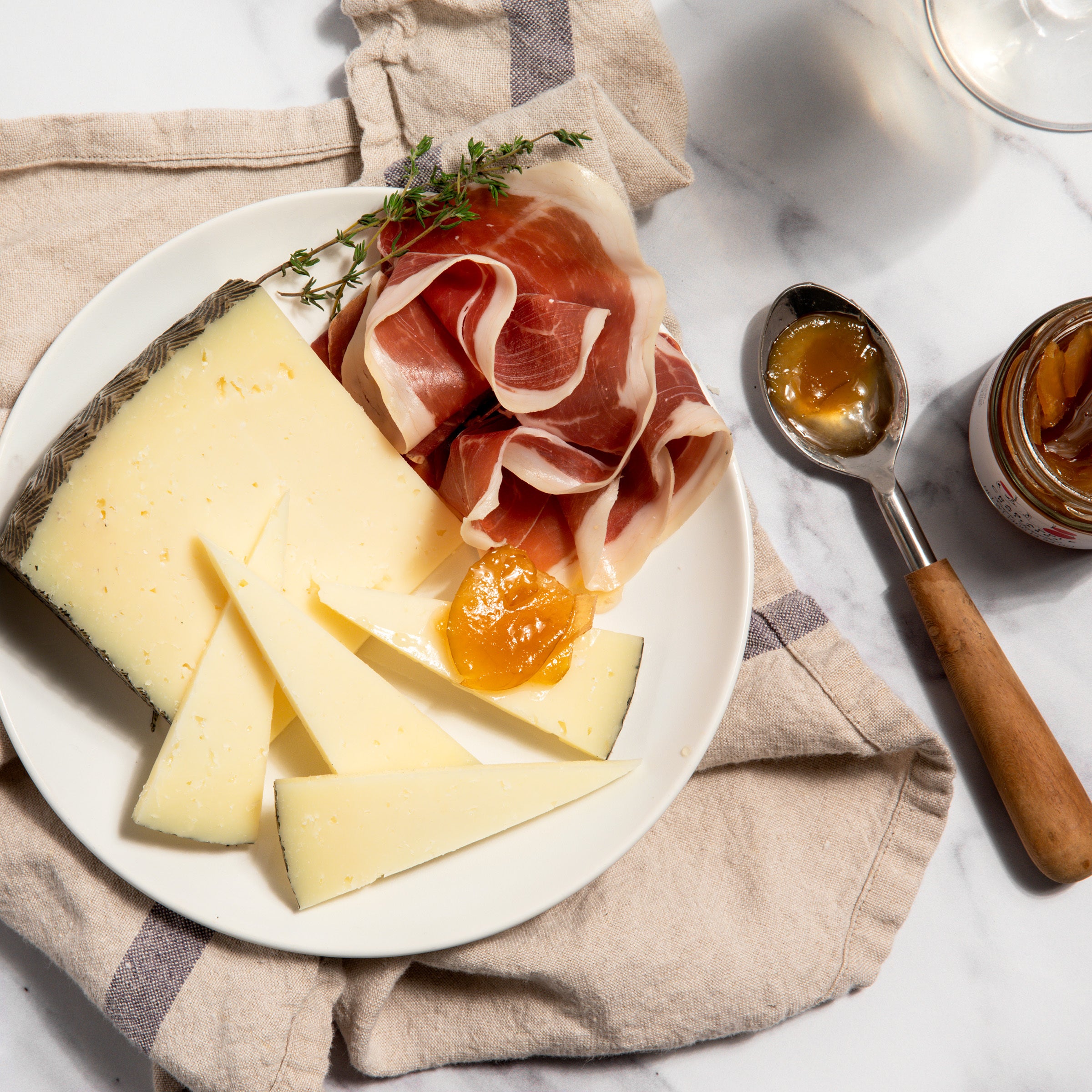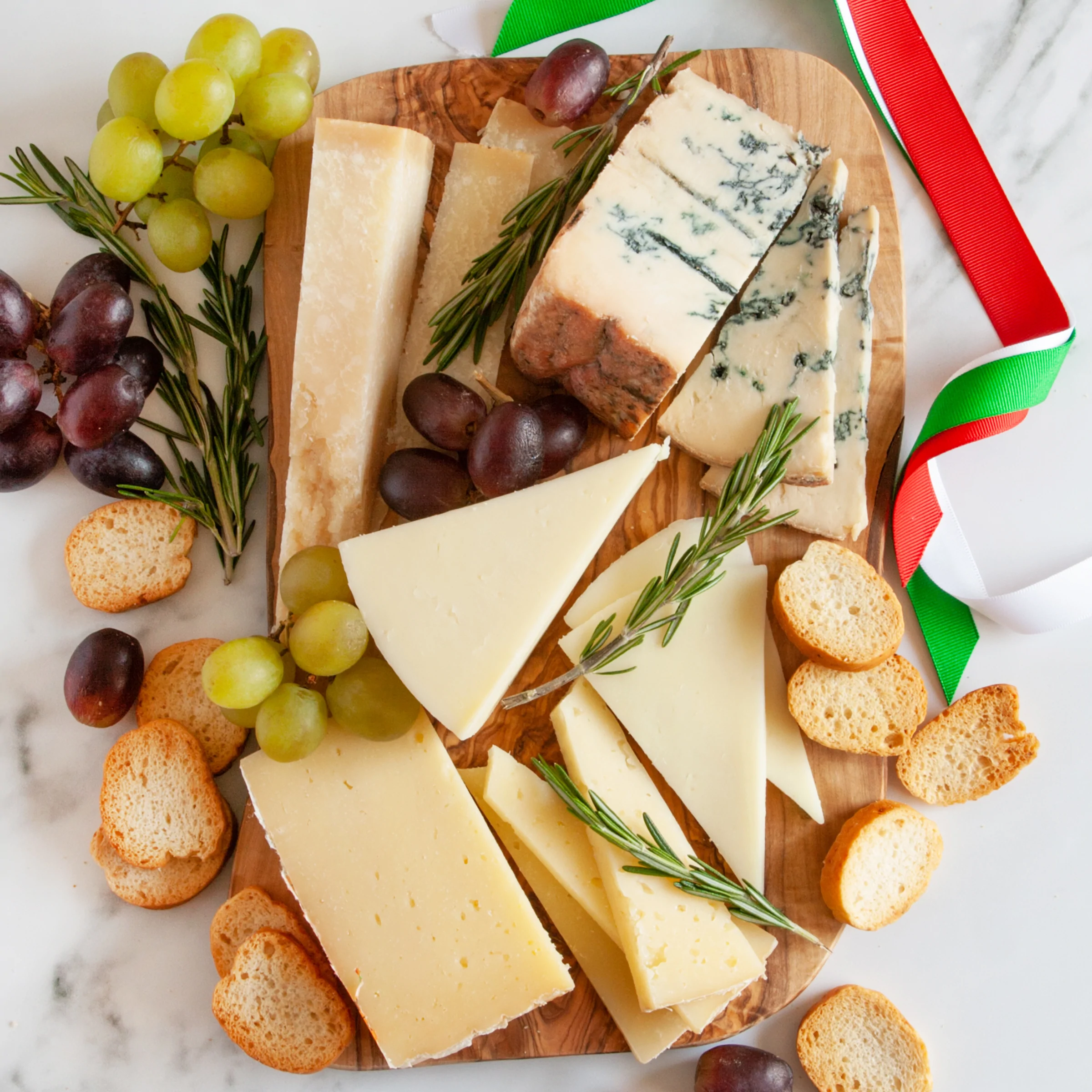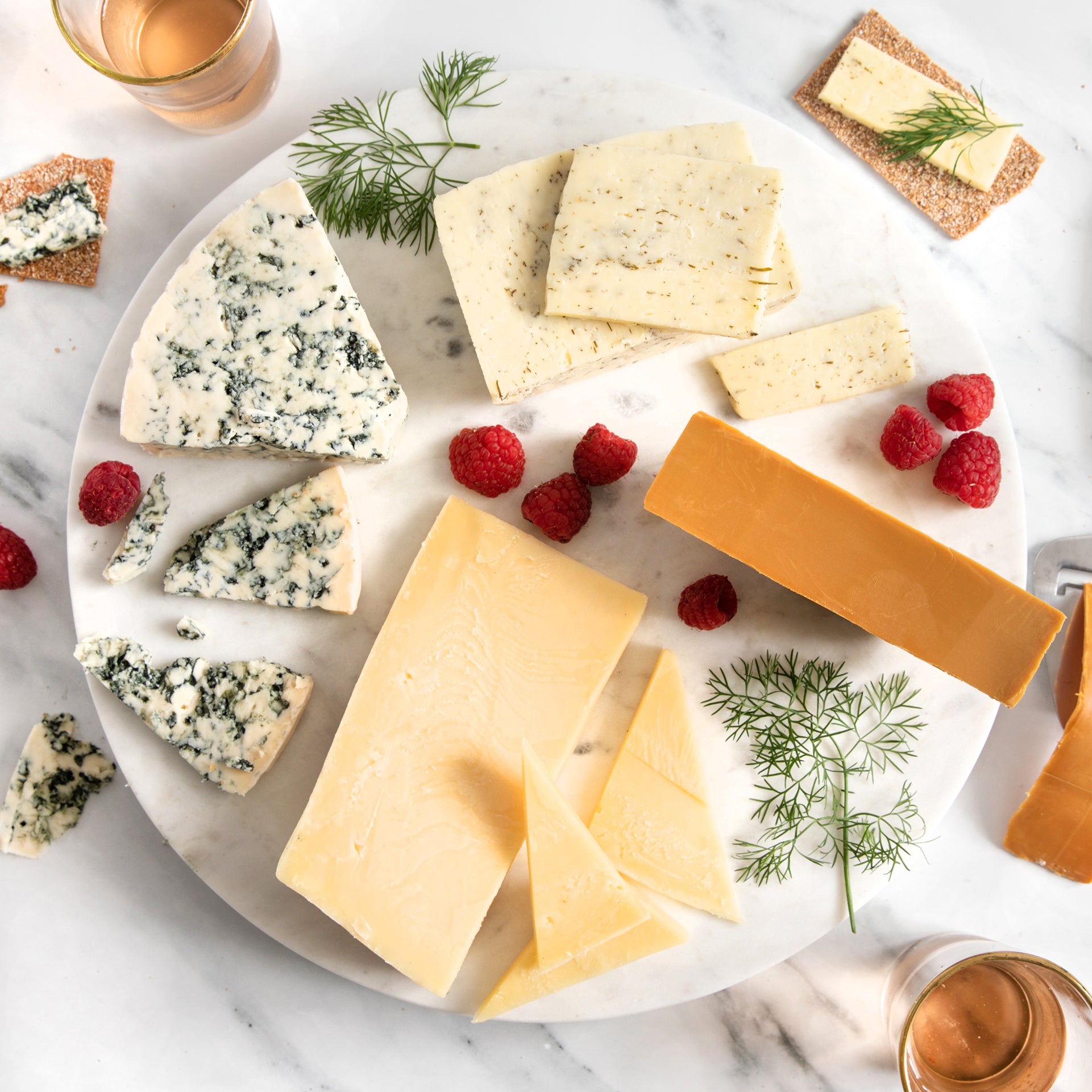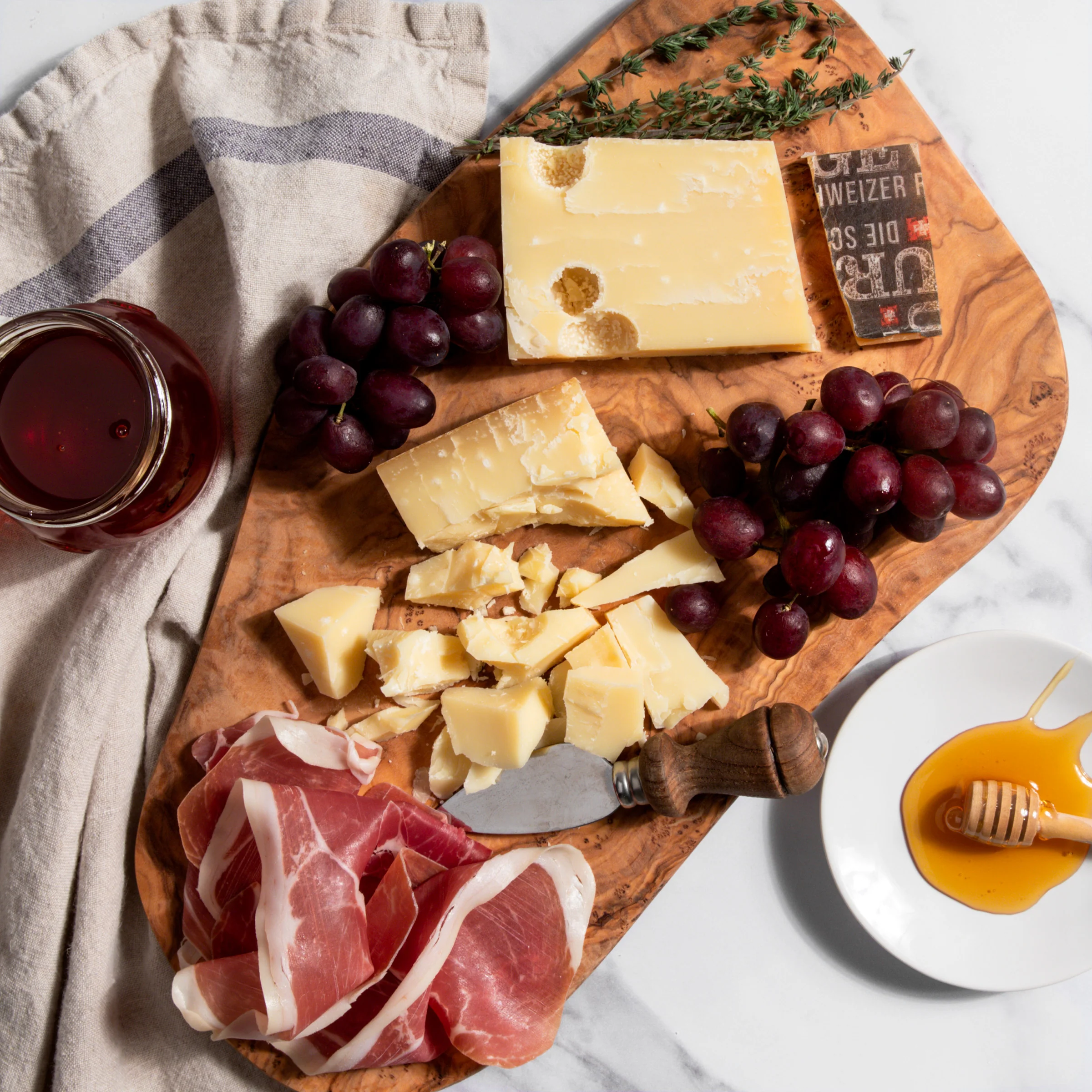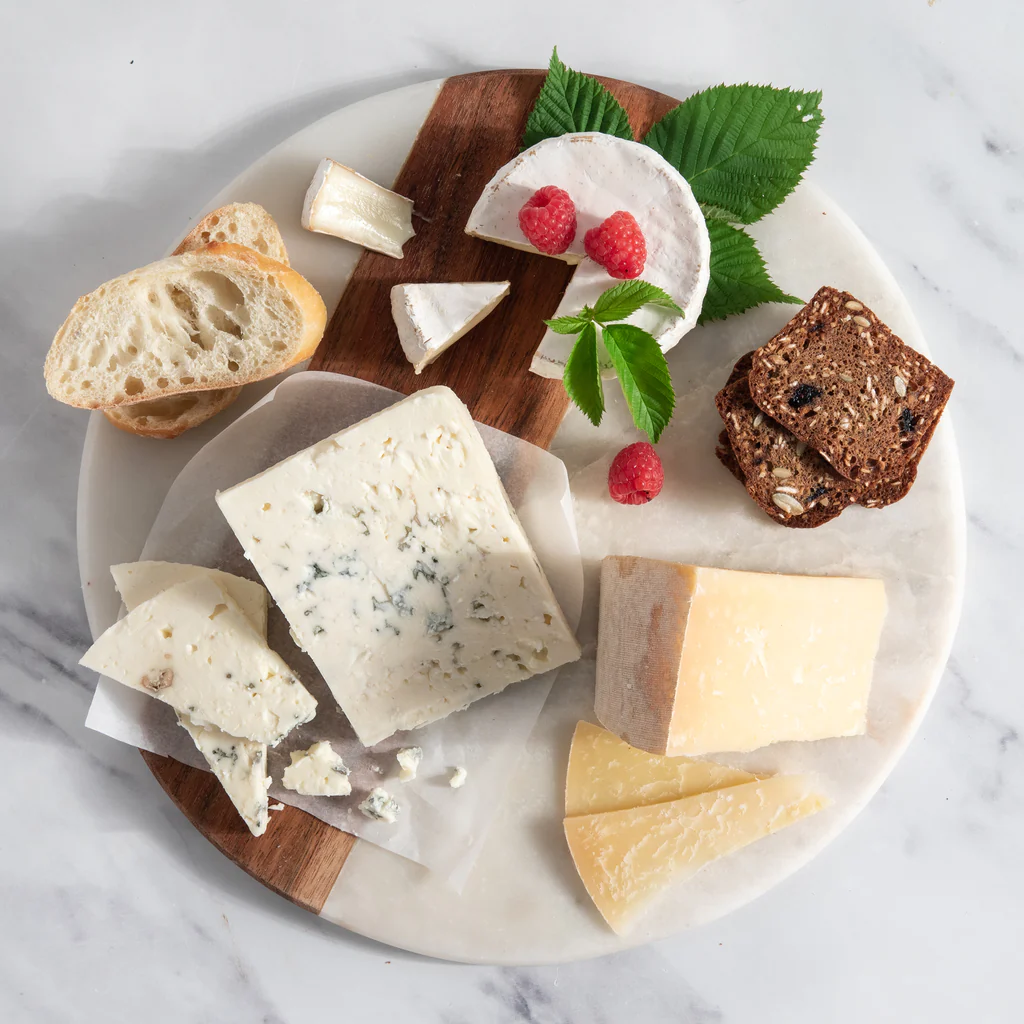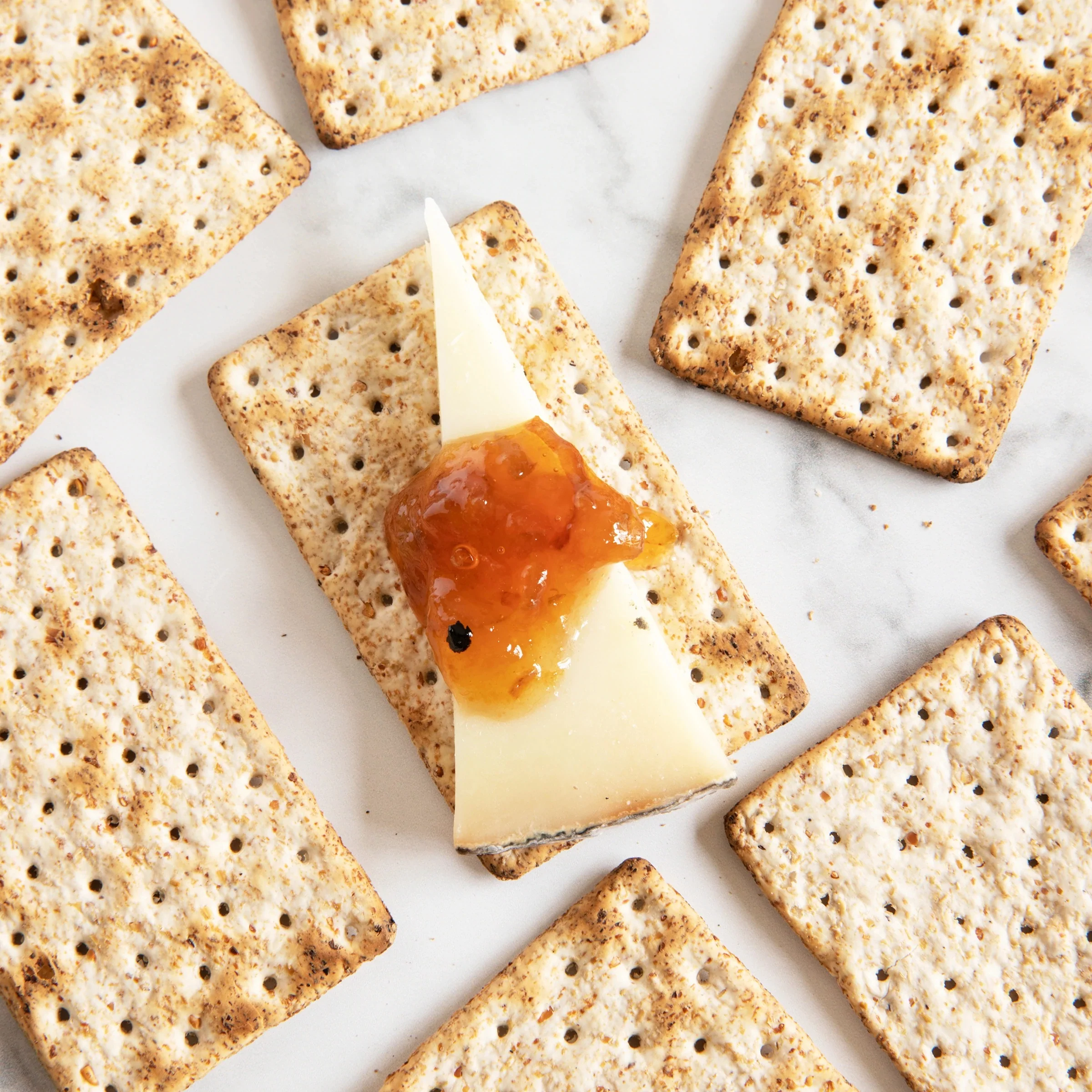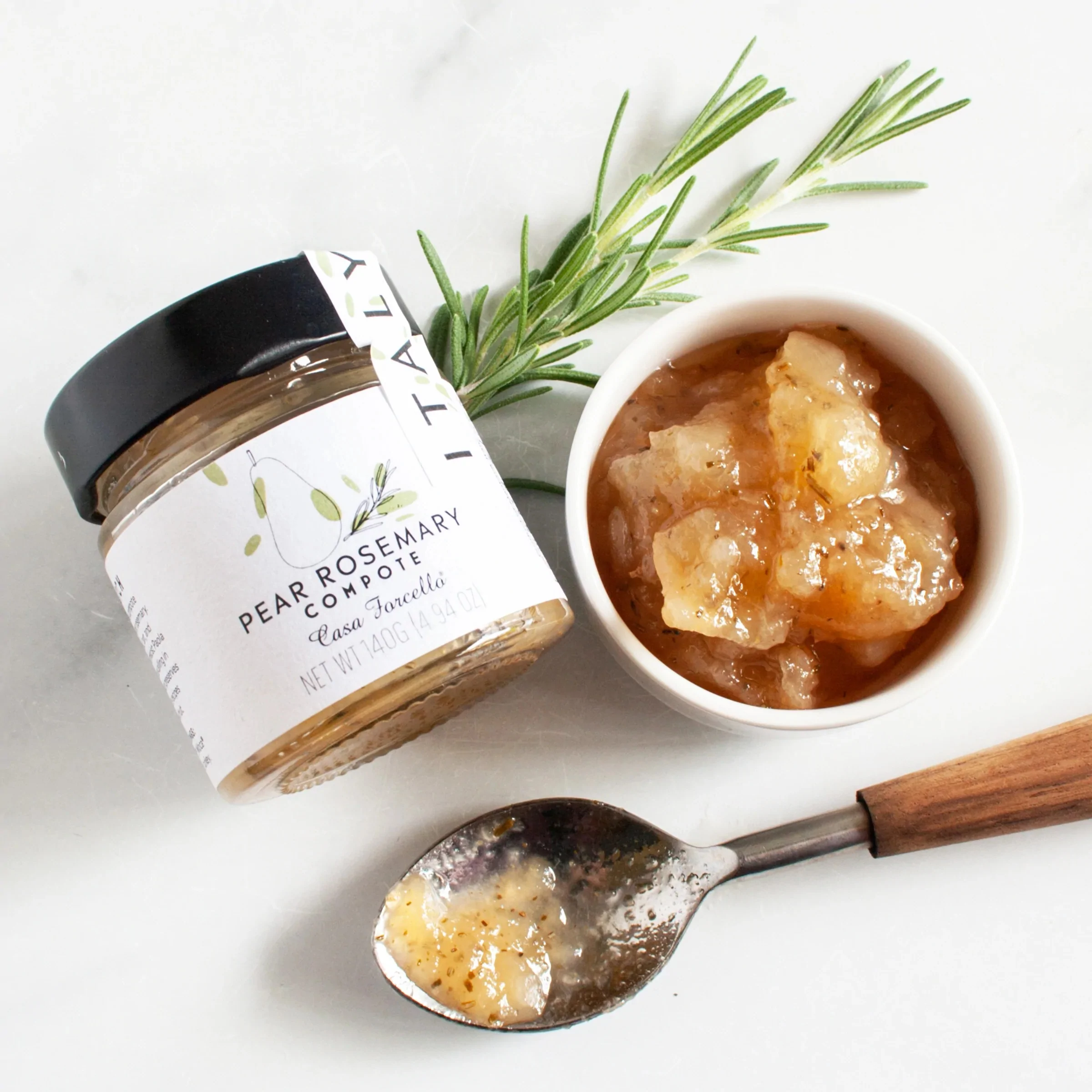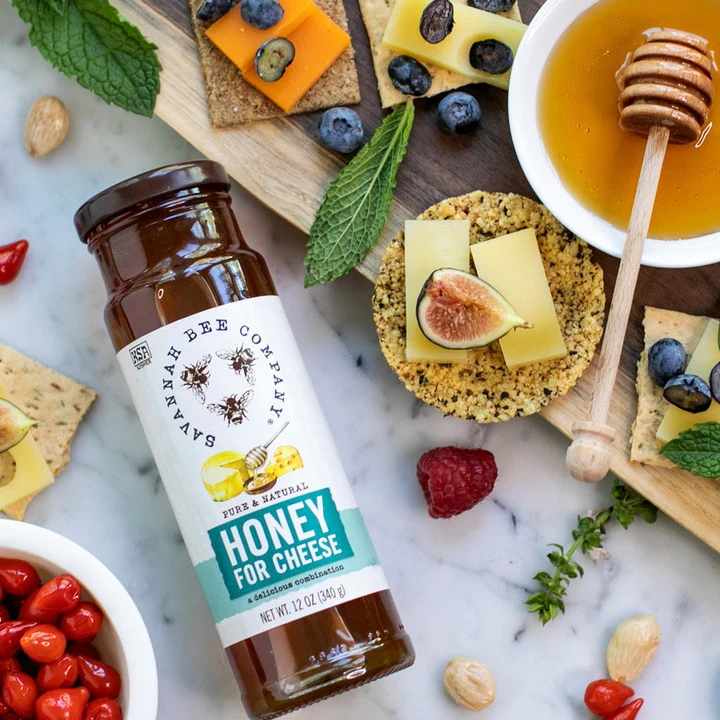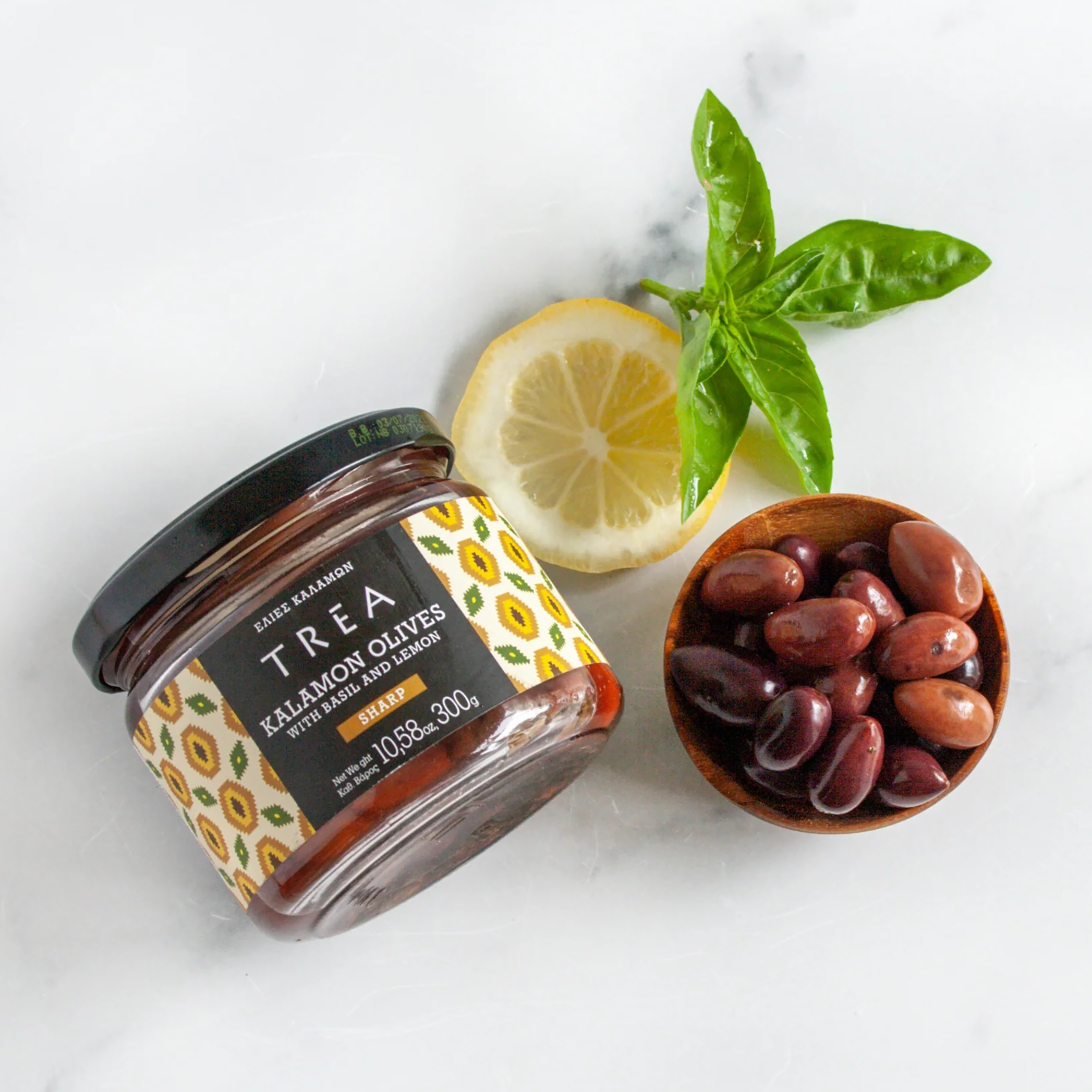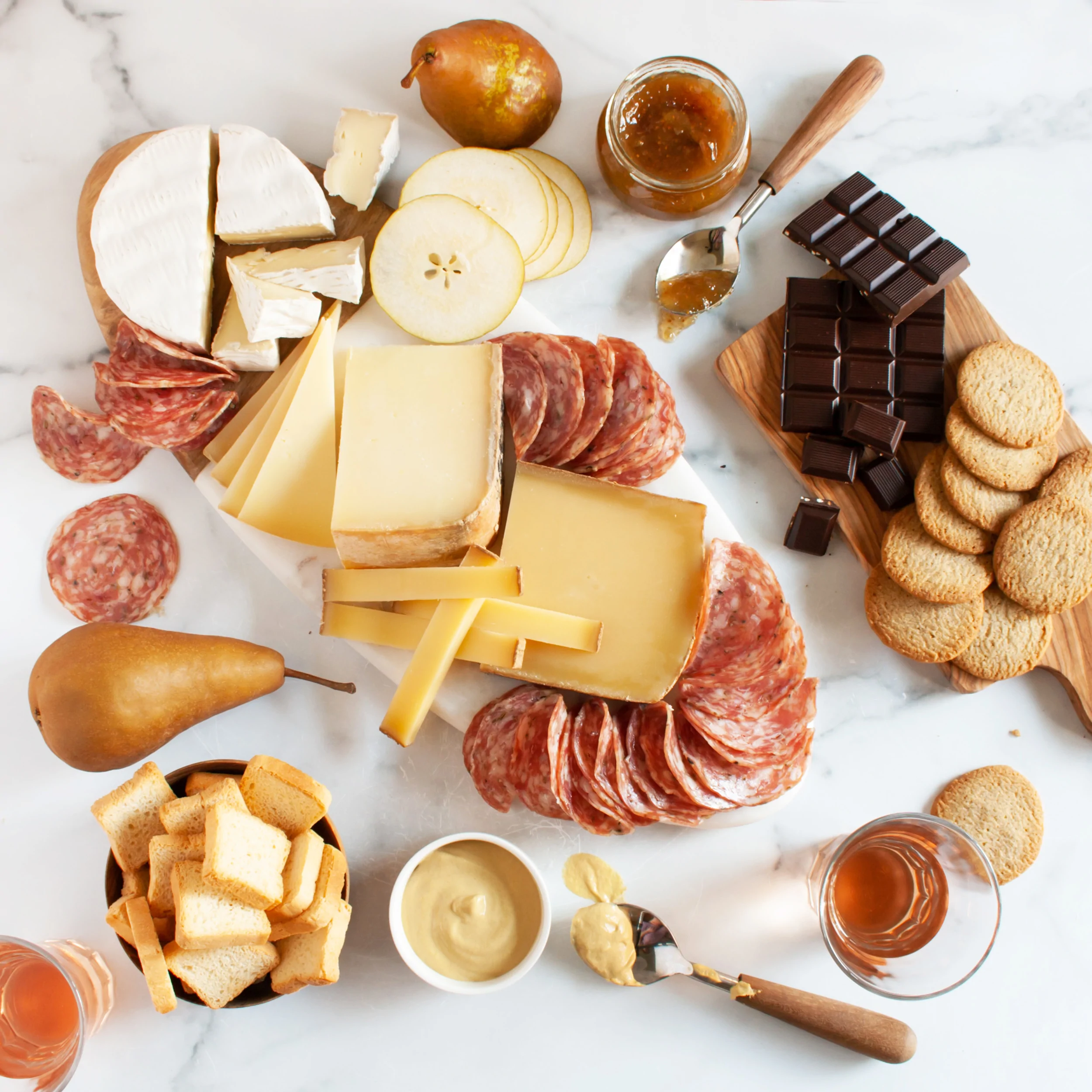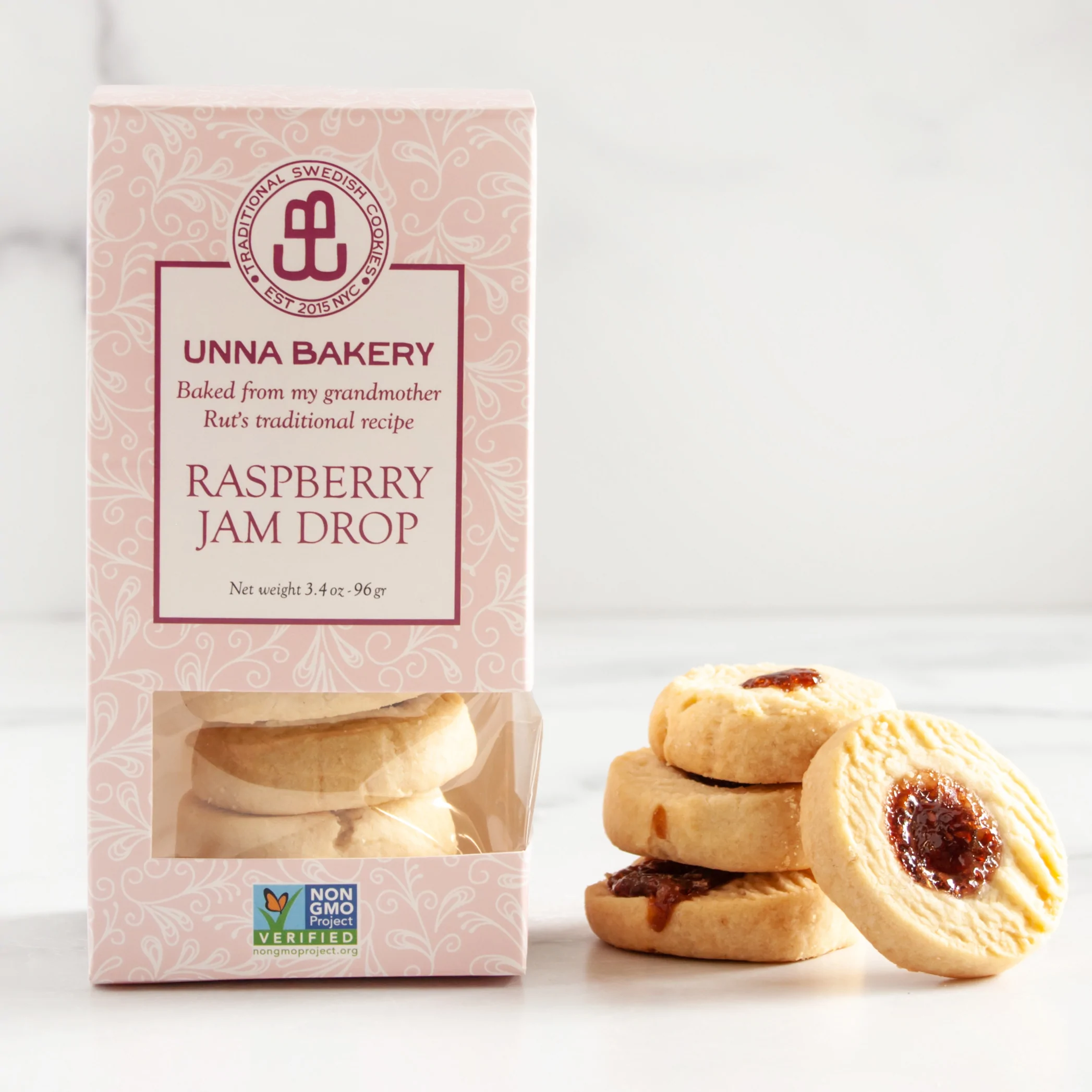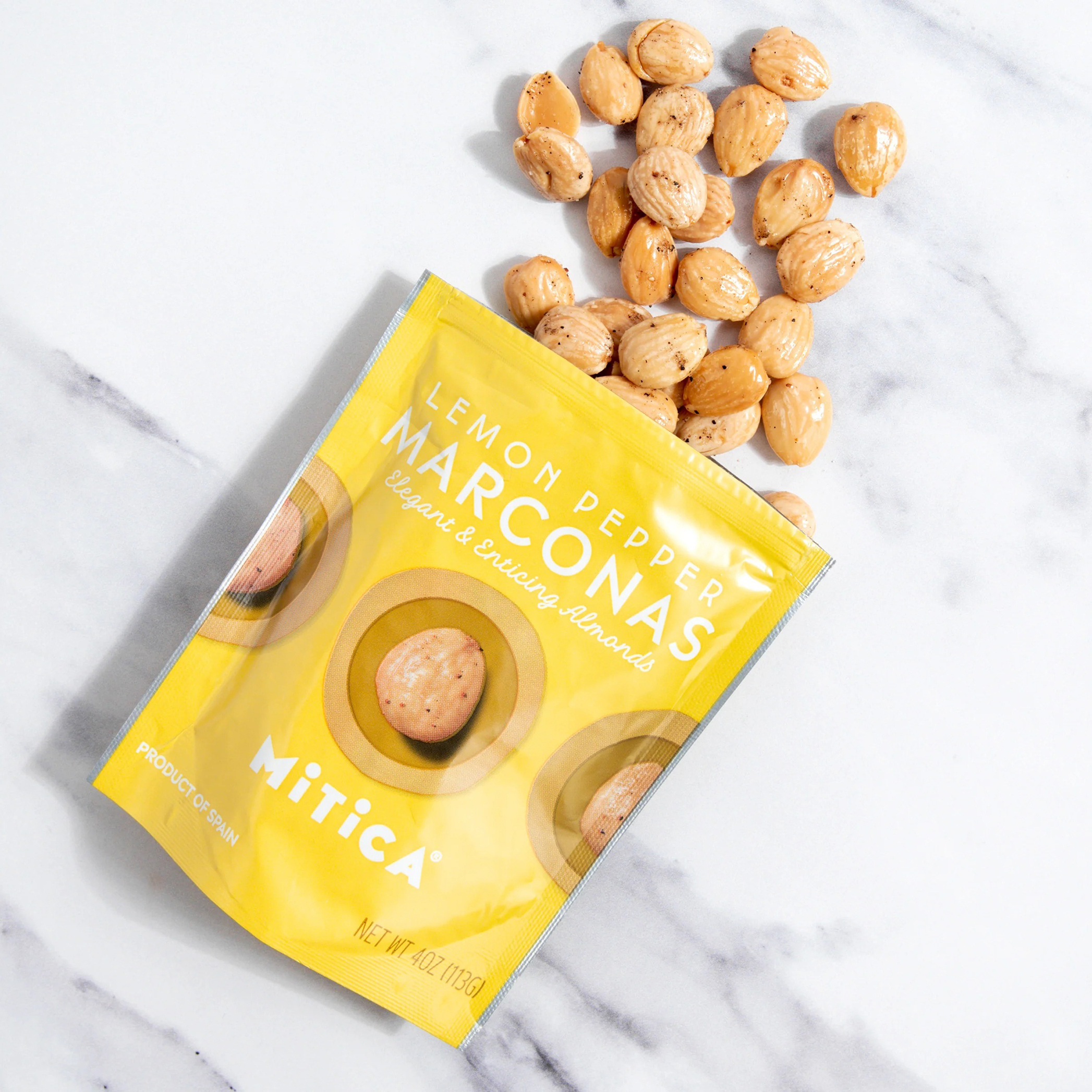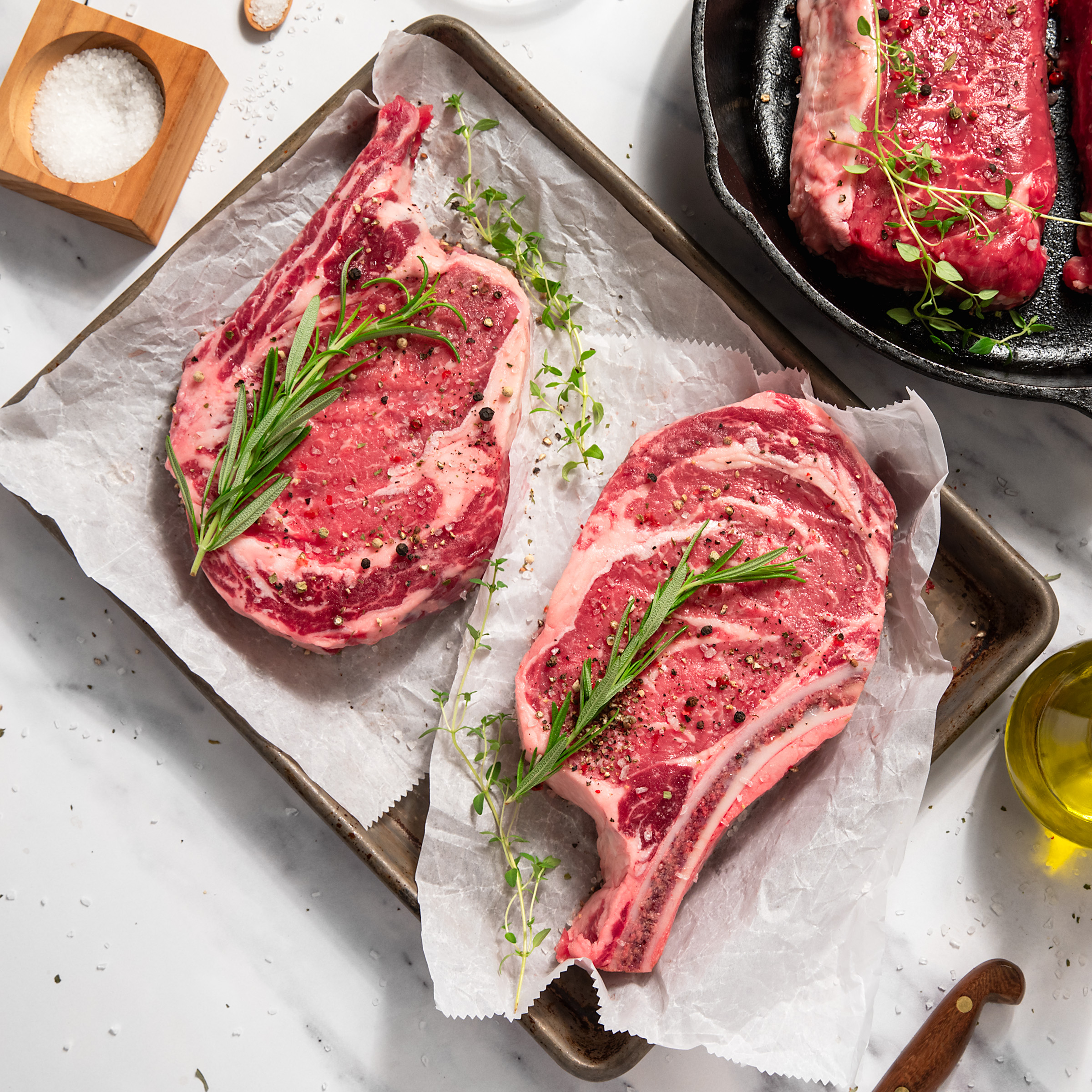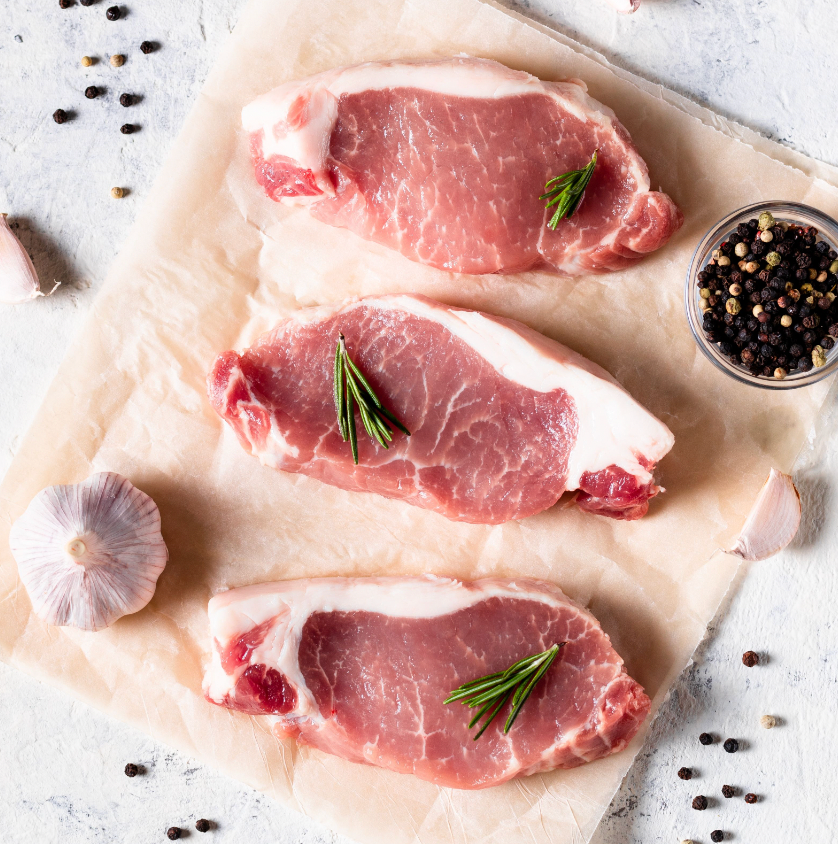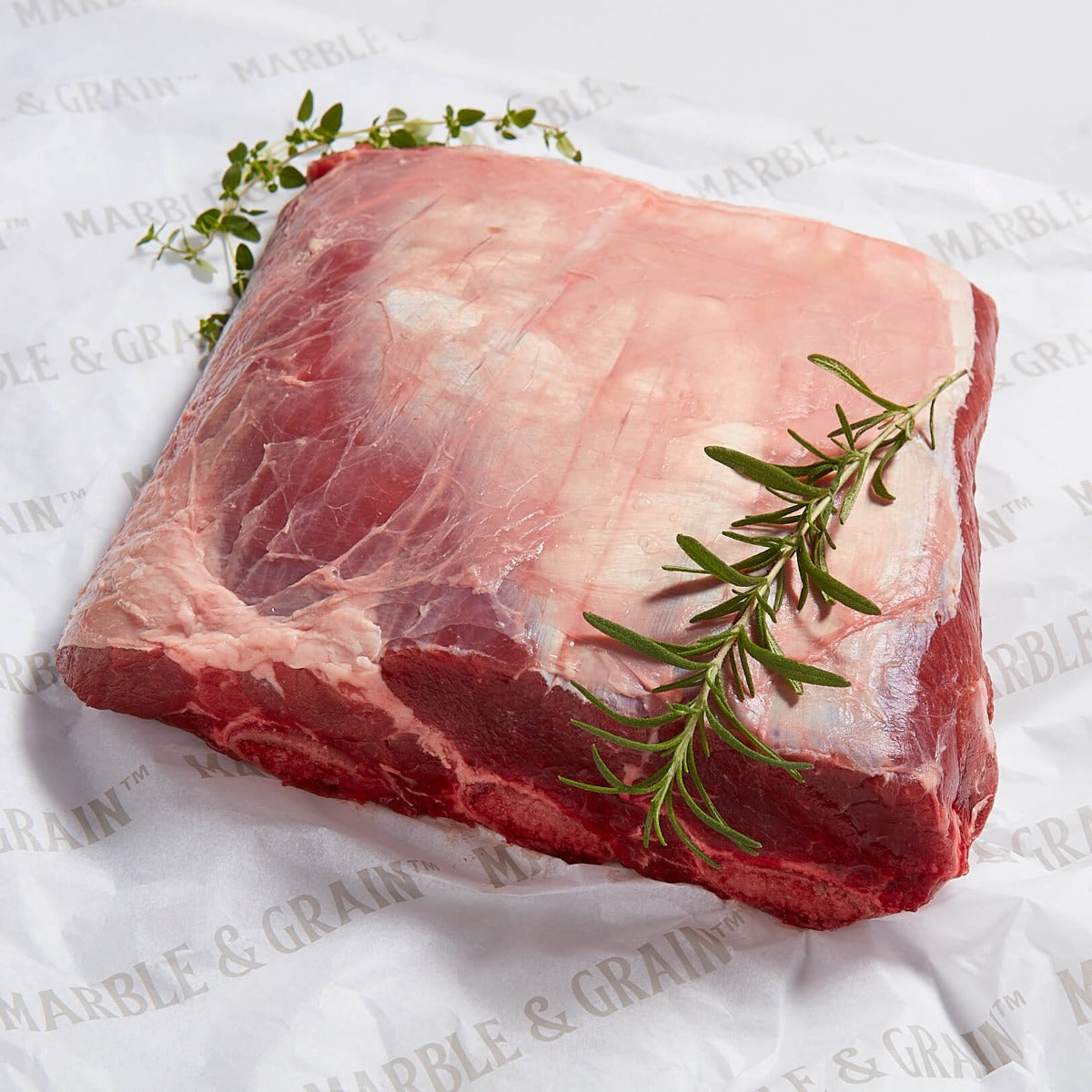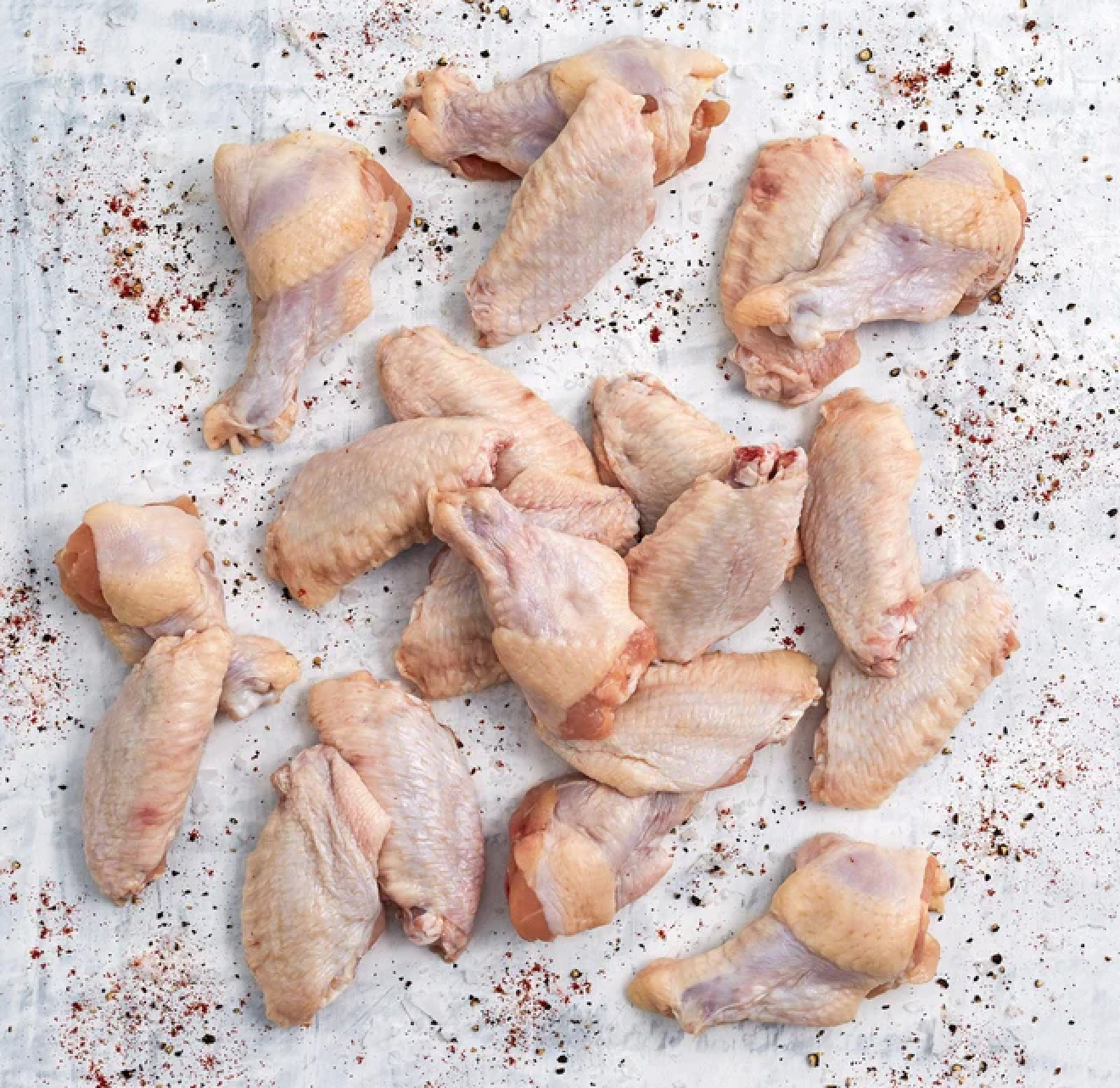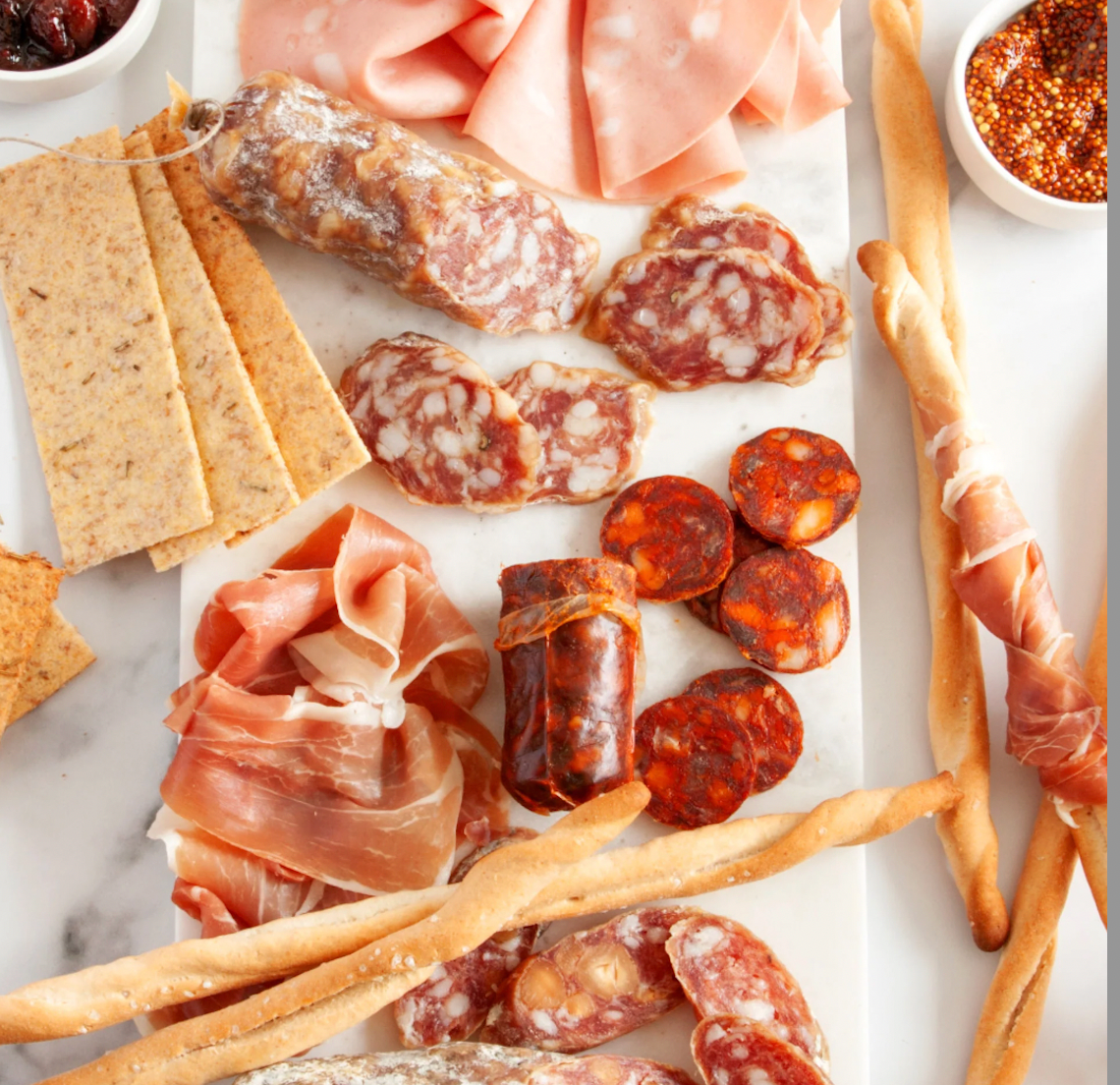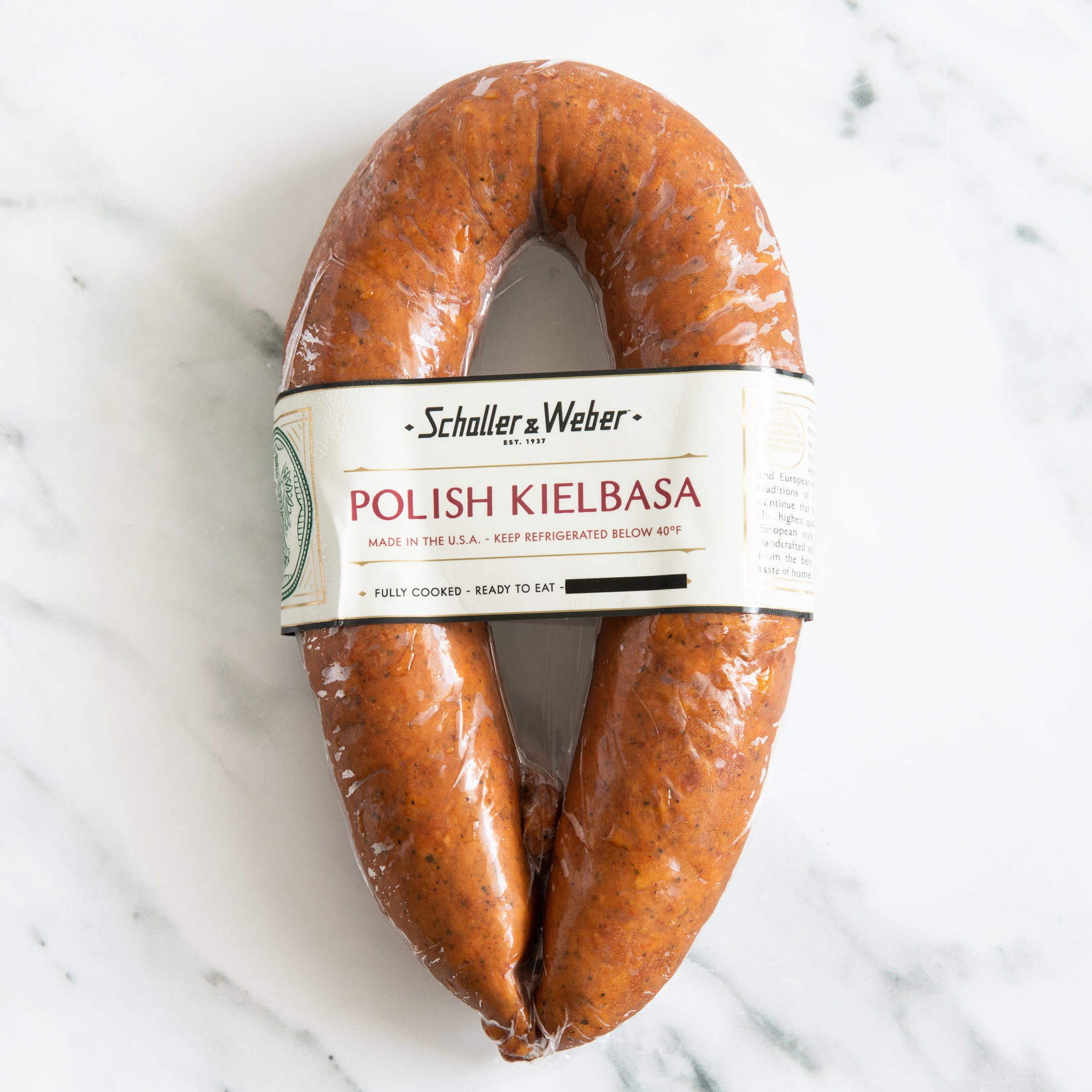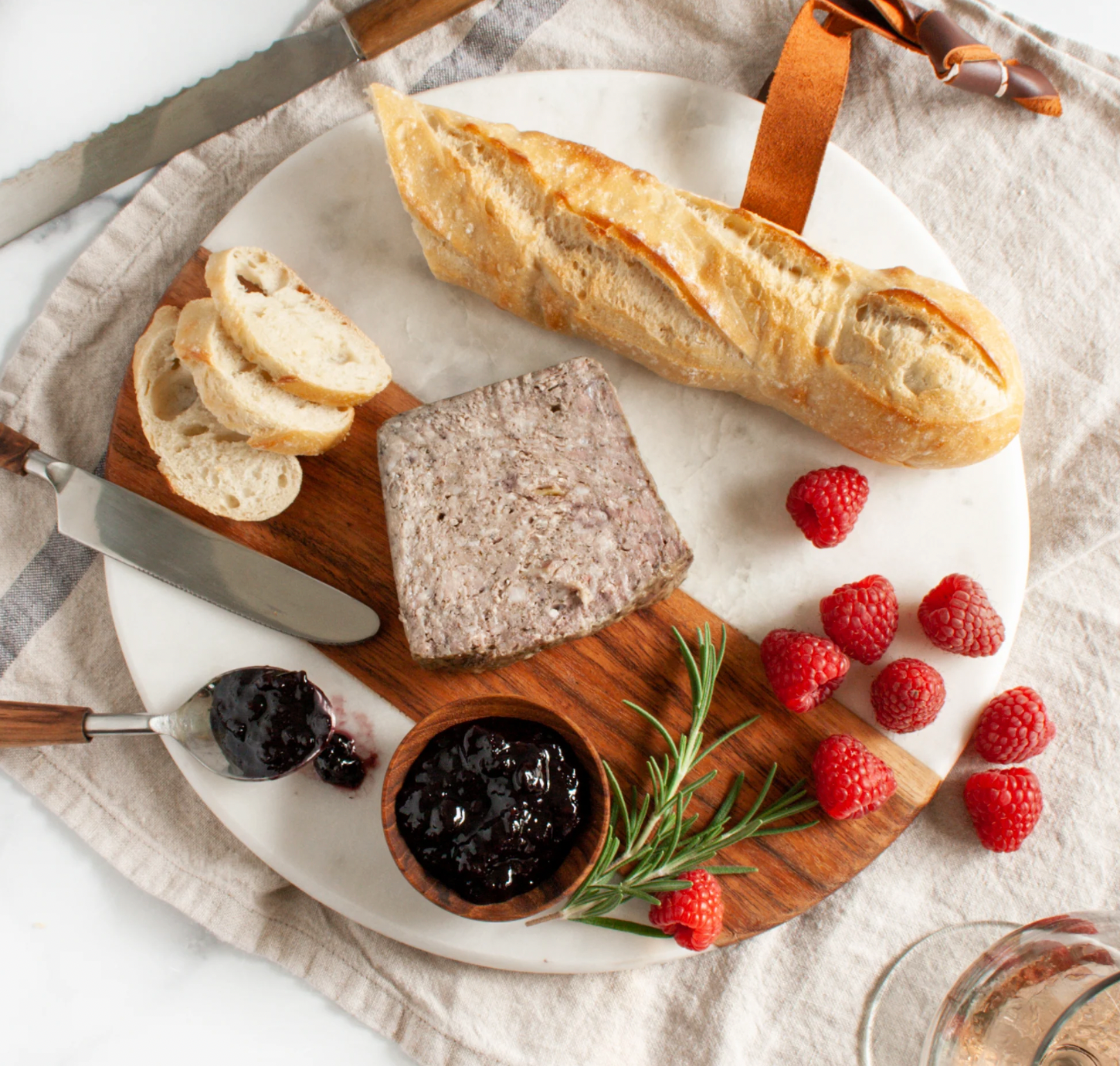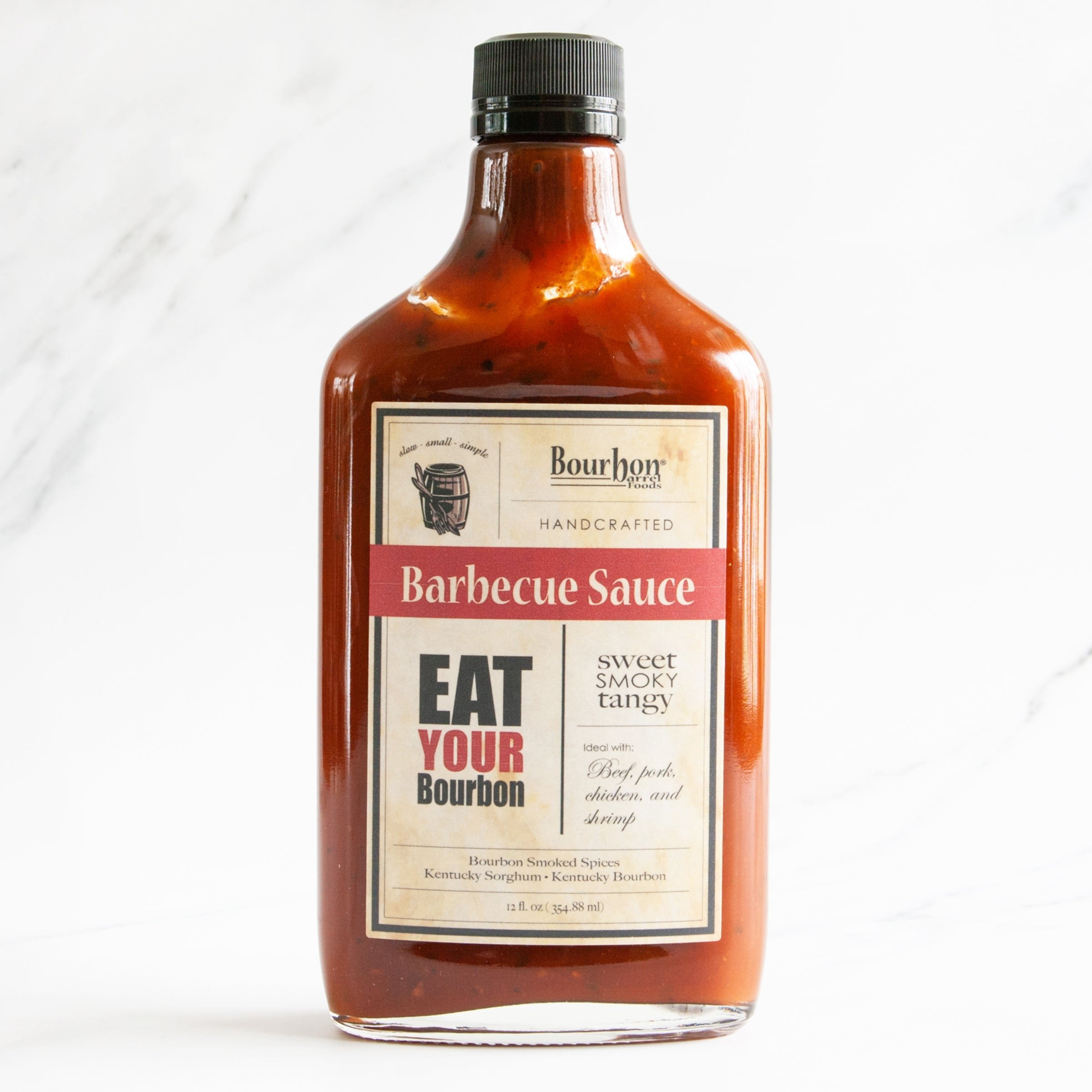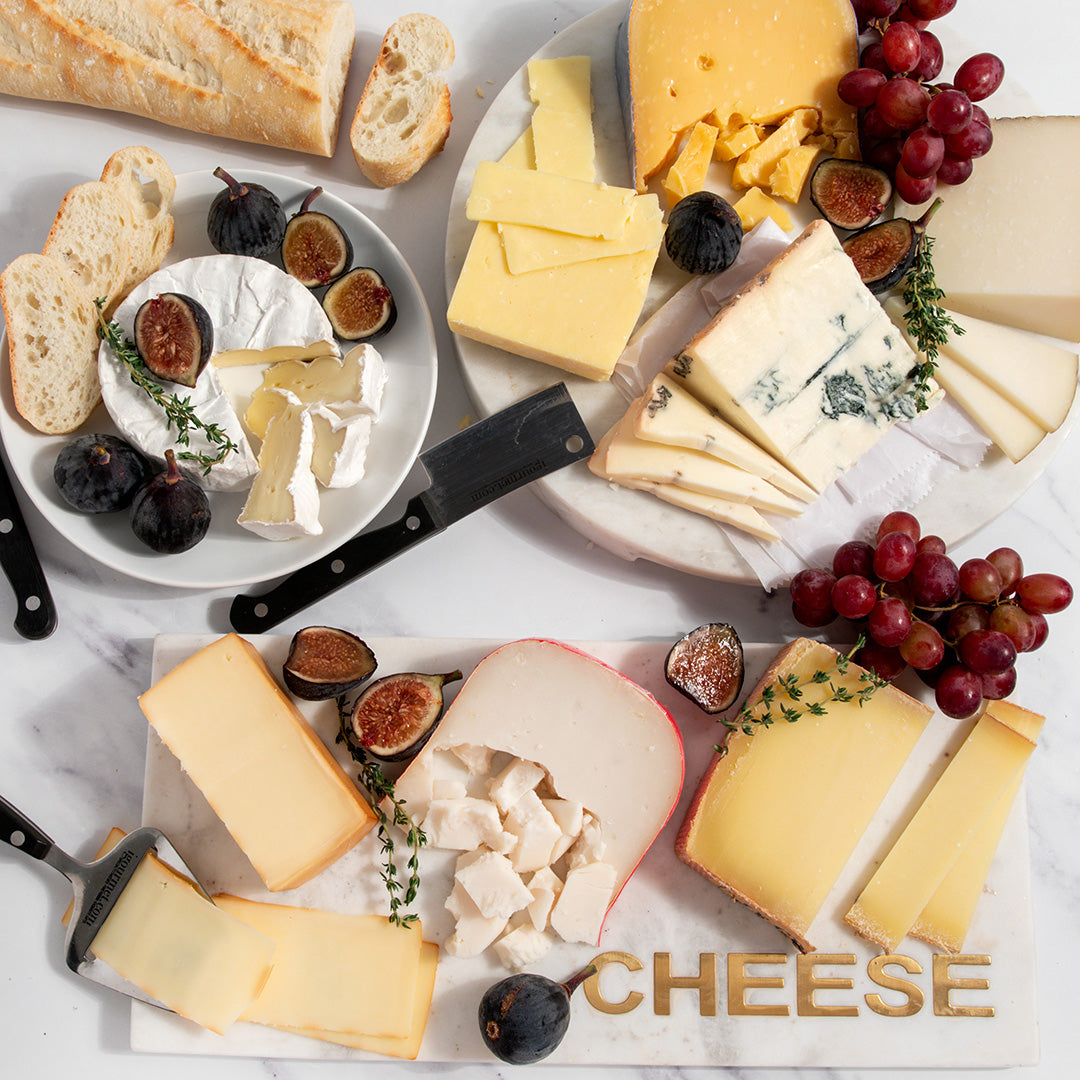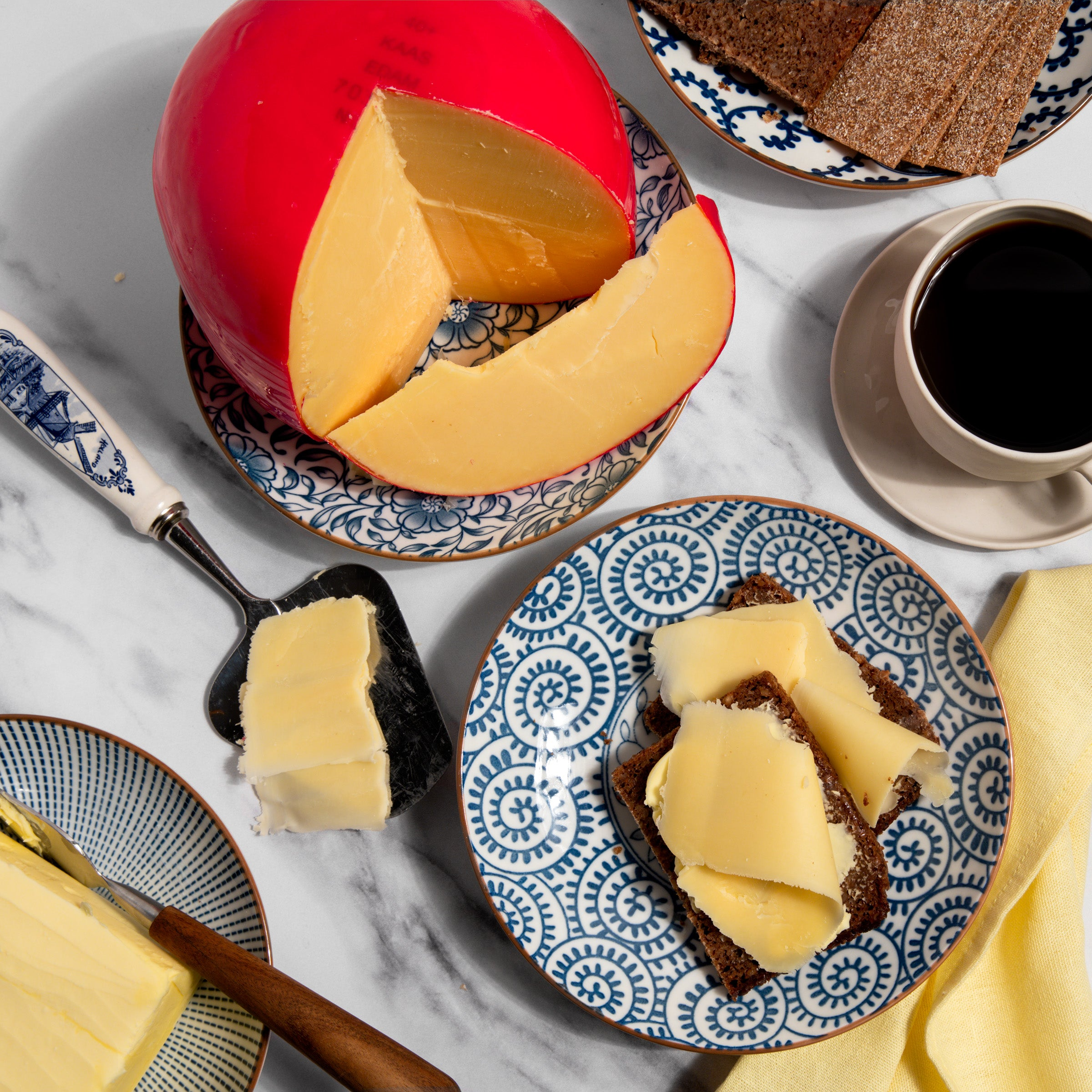Guide to Cheese Types
Stilton - Gourmet Guide
June 12, 2019 | By Dave Mattingly
Known as the "King of English Cheeses", Stilton is a creamy pungent English cheese that is made in two varieties: the famous blue-veined Blue Stilton and the less common White Stilton.
Blue Stilton
Blue Stilton was first sold at a coach stop in the village of the same name in the early 1700s in Cambridgeshire, England (nearly 80 miles north of London) while it was most likely produced in nearby Leicestershire, Nottinghamshire or Derbyshire. Stage coach routes from London to Northern England passed through Stilton which allowed the cheese to gain popularity quickly. The village of Stilton became famous for Blue Stilton cheese which was once referred to as "English Parmesan". During this time, Stilton was a hard cream cheese that had a reputation for quality, perhaps due to the use of whole milk to which cream was added. By 1936, the Stilton Cheesemaker's Association was formed in order to protect the quality and origin of Stilton cheese. In 1966 Stilton became the first British cheese to receive the certification trademark which offered name protection for Stilton. Stilton must be produced in one of the three counties of Derbyshire, Leicestershire and Nottinghamshire in order to be sold under the Stilton name. Interestingly, the village of Stilton is not permitted to produce the cheese, as Stilton is not located in Derbyshire, Leicestershire or Nottinghamshire county but rather Huntingdonshire. At the time that the Protected Designation of Origin label was applied for in 1996, there was no evidence that the modern recipe for Blue Stilton was ever made in the village of Stilton.
To be called "Blue Stilton" the cheese must be made from local pasteurized milk in Derbyshire, Leicestershire or Nottinghamshire counties. Currently only six dairies are licensed to produce Stilton Cheese. Blue Stilton must be unpressed, allowed to form its own crust, and produced in the traditional cylindrical shape, with blue veins extending from the center and "have a taste profile typical of Stilton". Blue Stilton is aged for a minimum of nine weeks which creates a semi-soft creamy cheese that gets crumblier as it ages. Blue Stilton gets its distinct blue veins from "penicillium roqueforti" (blue mold spores) created by introducing air into the core of the cheese with stainless steel needles. Blue Stilton provides a milder flavor than both Gorgonzola and Roquefort, and is ideal in soups, salads and dips, dressings and sauces. Sweet wines pair particularly well with Stilton such as Port or a sweet sherry. Blue Stilton is paired with Double Gloucester to make the visually stunning Hunstman cheese. This two British cheeses are layered together to create the ideal flavor combination, perfect in soups or chili or when eaten as a dessert cheese. Blue Stilton, in wheel or crock format, is a very popular Christmas Gift in the UK and the US.
White Stilton
Without the Penicillium roqueforti mold, White Stilton has a mild and faintly sour flavor as opposed to Blue Stilton's strong pungent flavor. While Blue Stilton is typically aged at least nine weeks, White Stilton is matured for only four weeks prior to being sold. White Stilton is a crumbly cheese, that is creamy and tangy, and yet unfinished by itself. White Stilton is the ideal dessert cheese, whose crumbly base is suitable for the addition of such fruits such as ginger, apricots, blueberries, lemon or cranberries. White Stilton has also been granted Protected Designation of Origin (PDO) status in the European Union and it must be made in the English counties of Nottinghamshire, Derbyshire or Leicestershire. While also available plain, White Stilton with Fruit creates an interesting and unique cheese that is light and sweet, the quintessential dessert cheese, ideal for any time of the day.
When searching for gourmet cheese online, look no further than igourmet.com.






